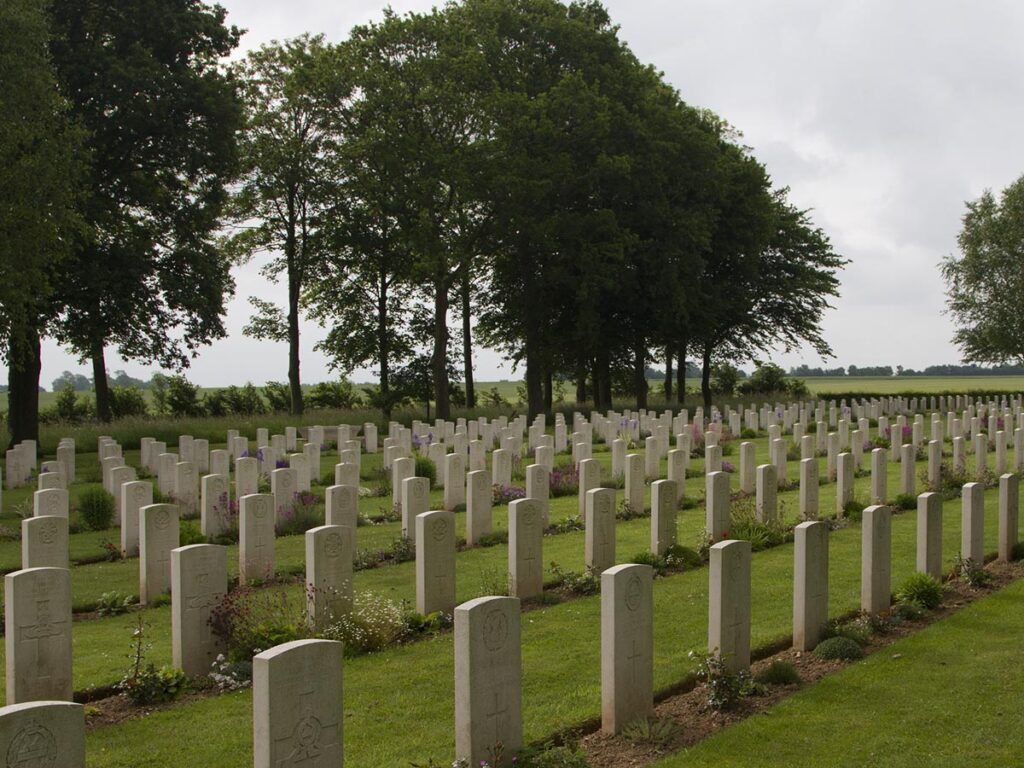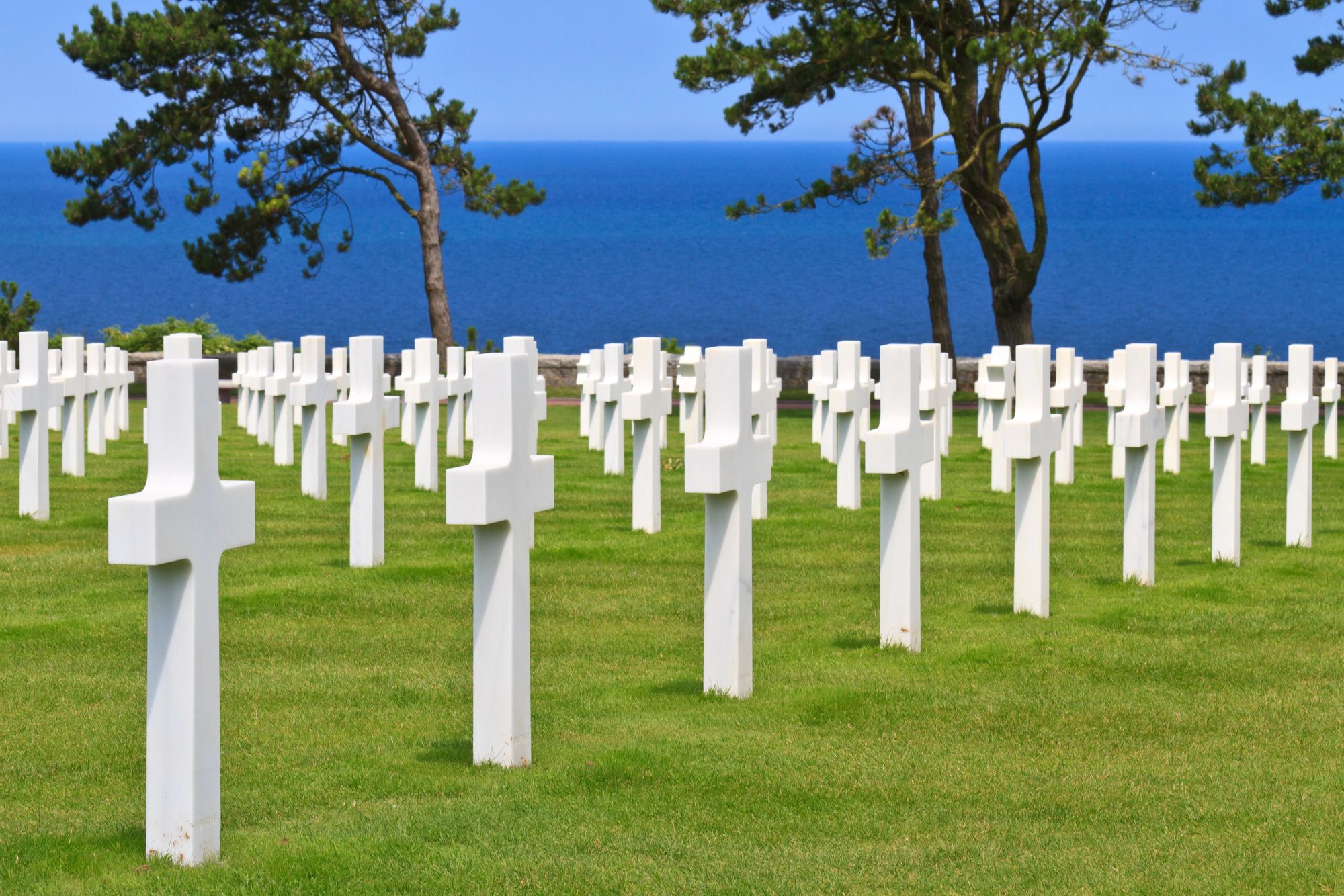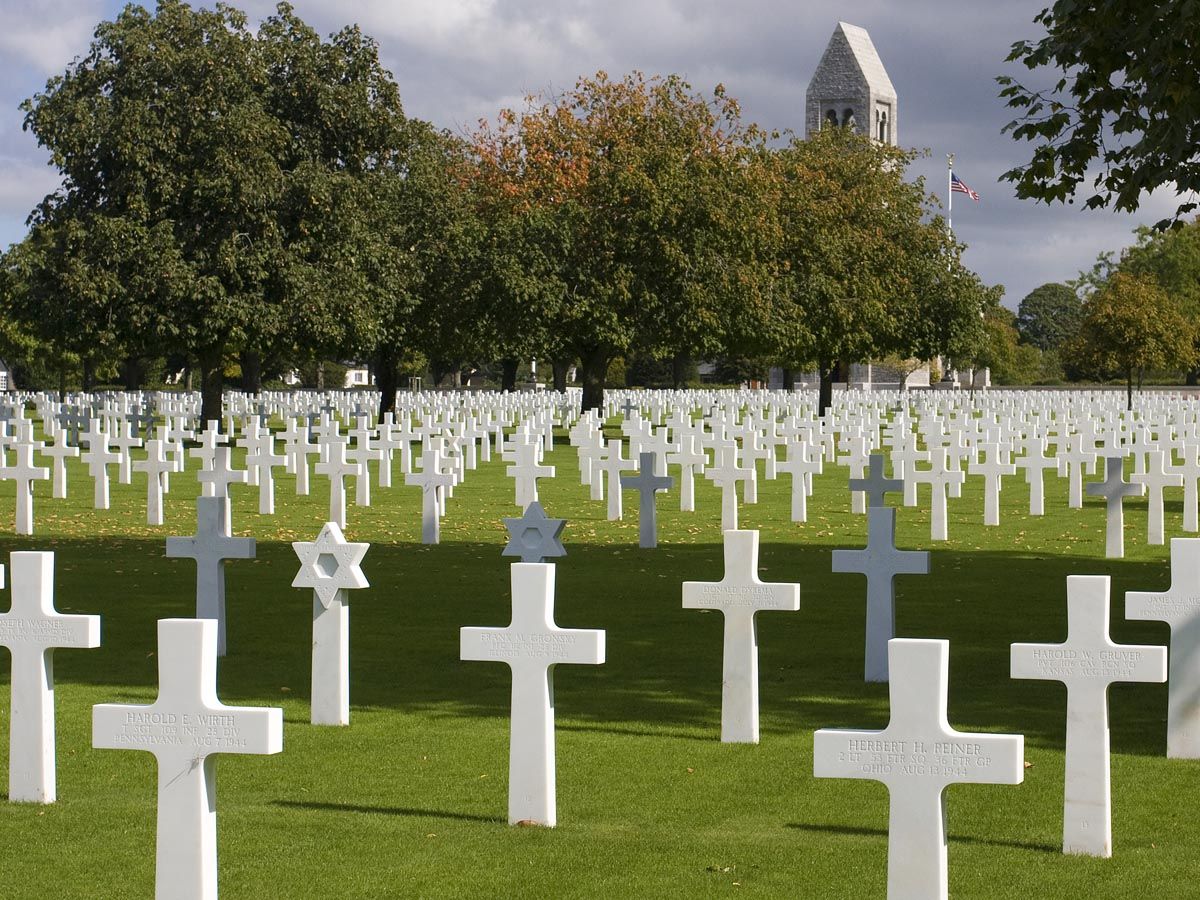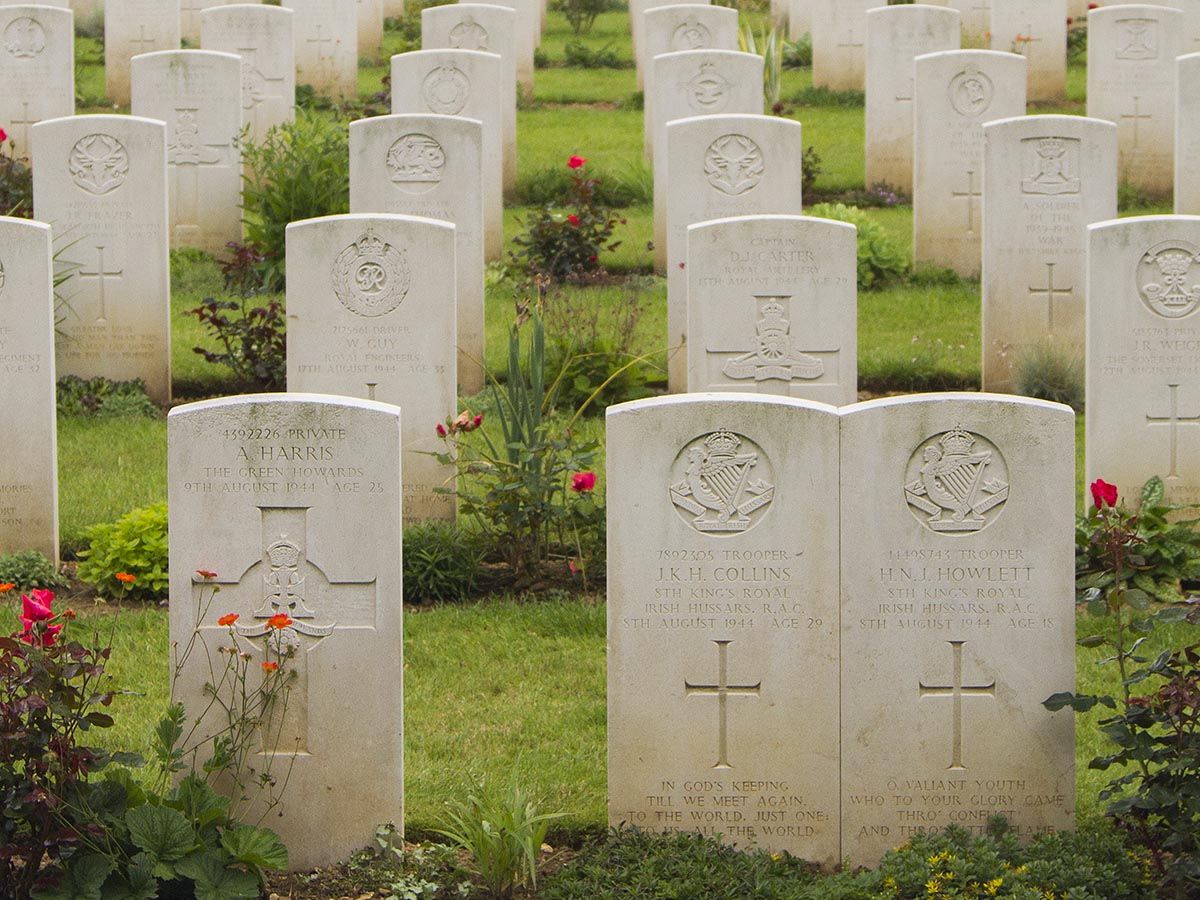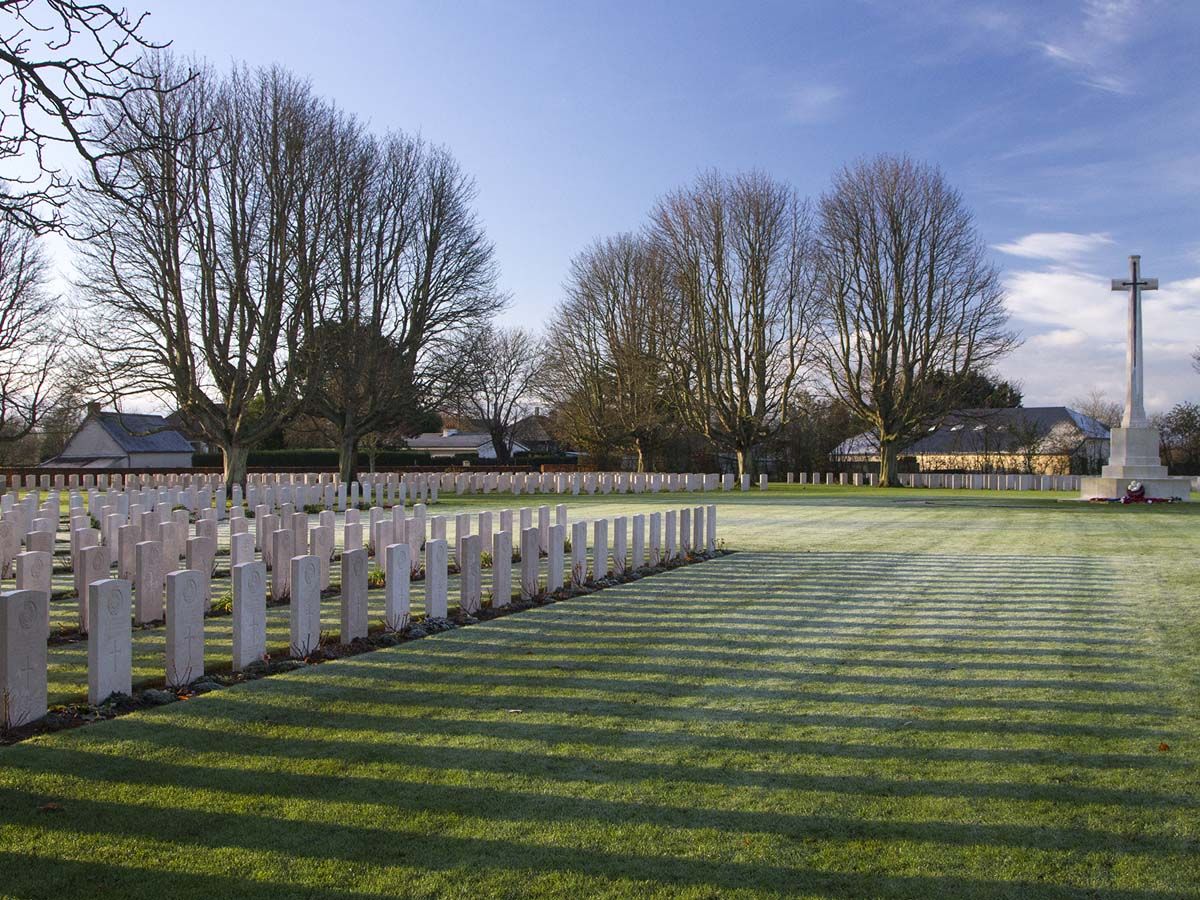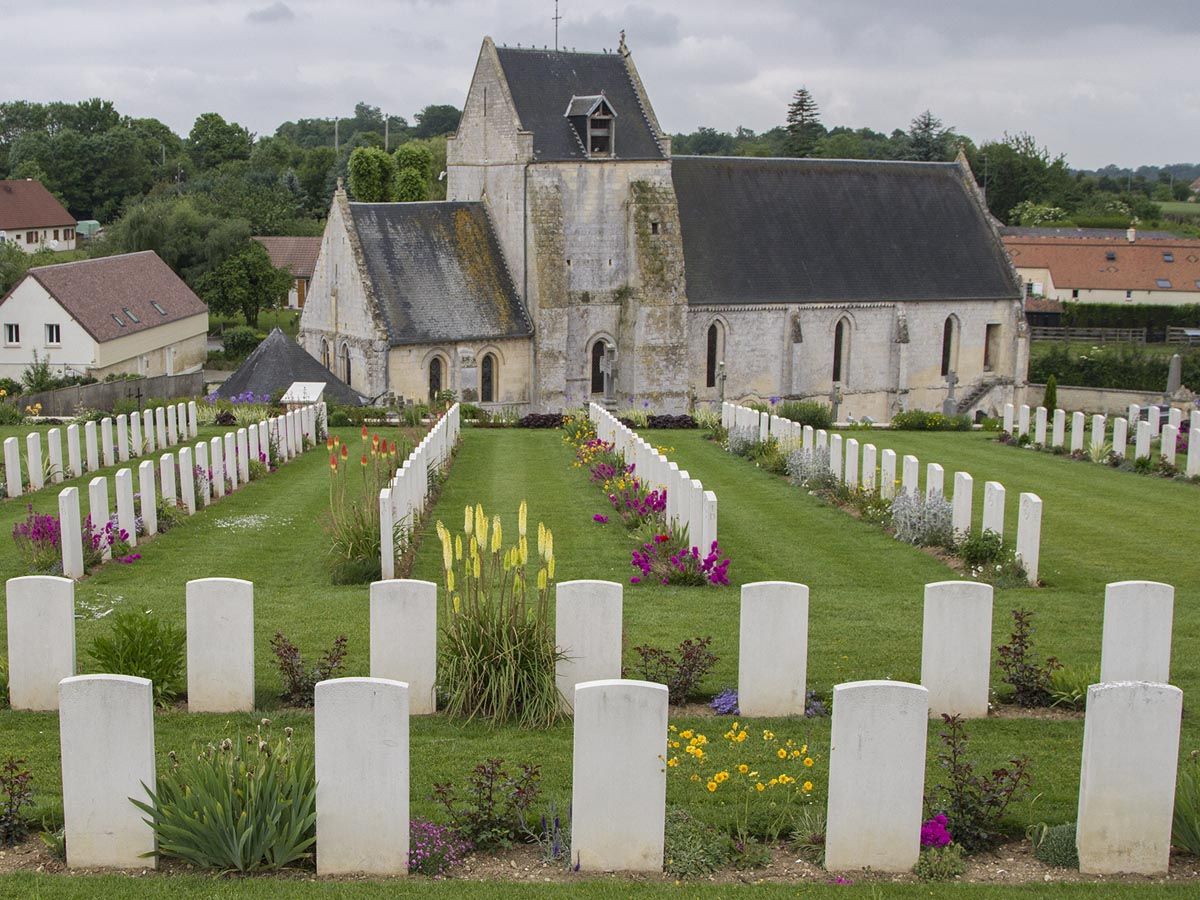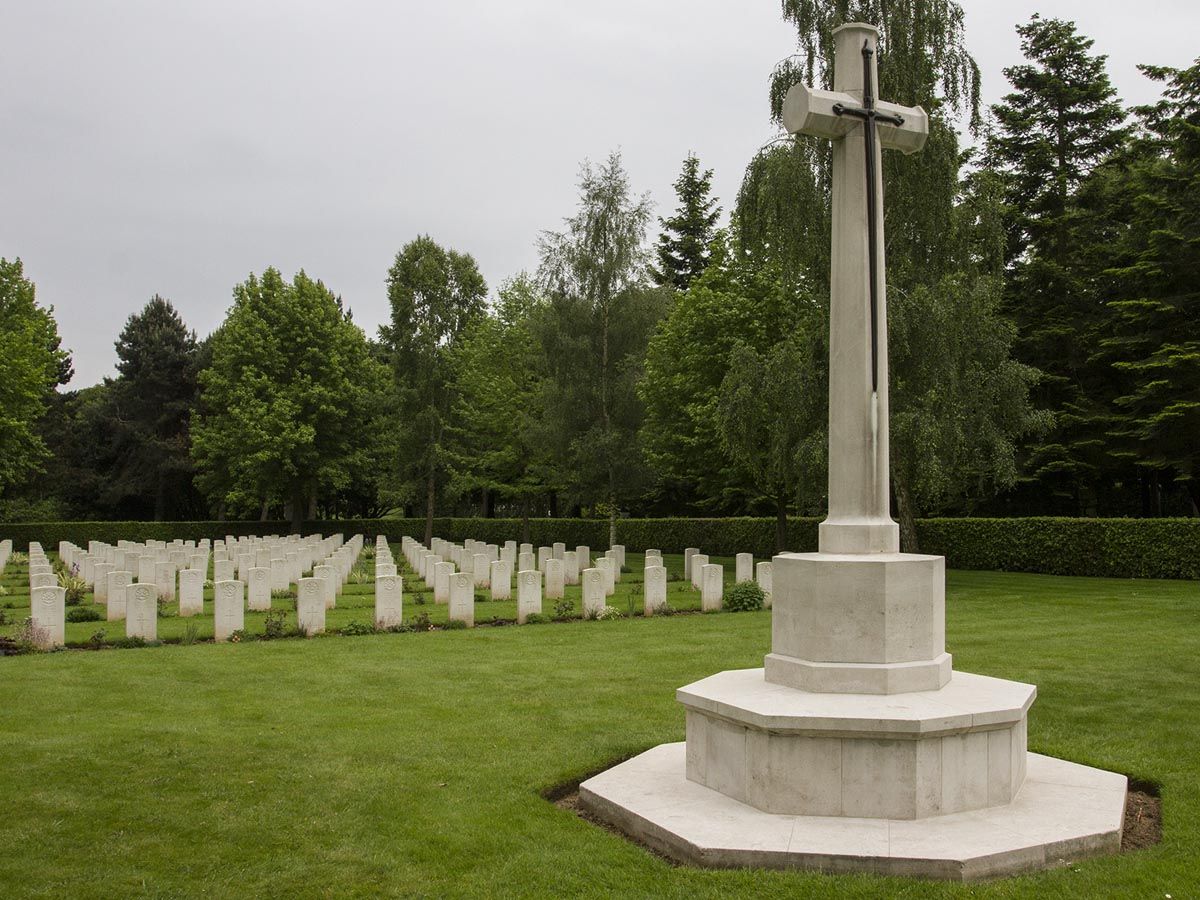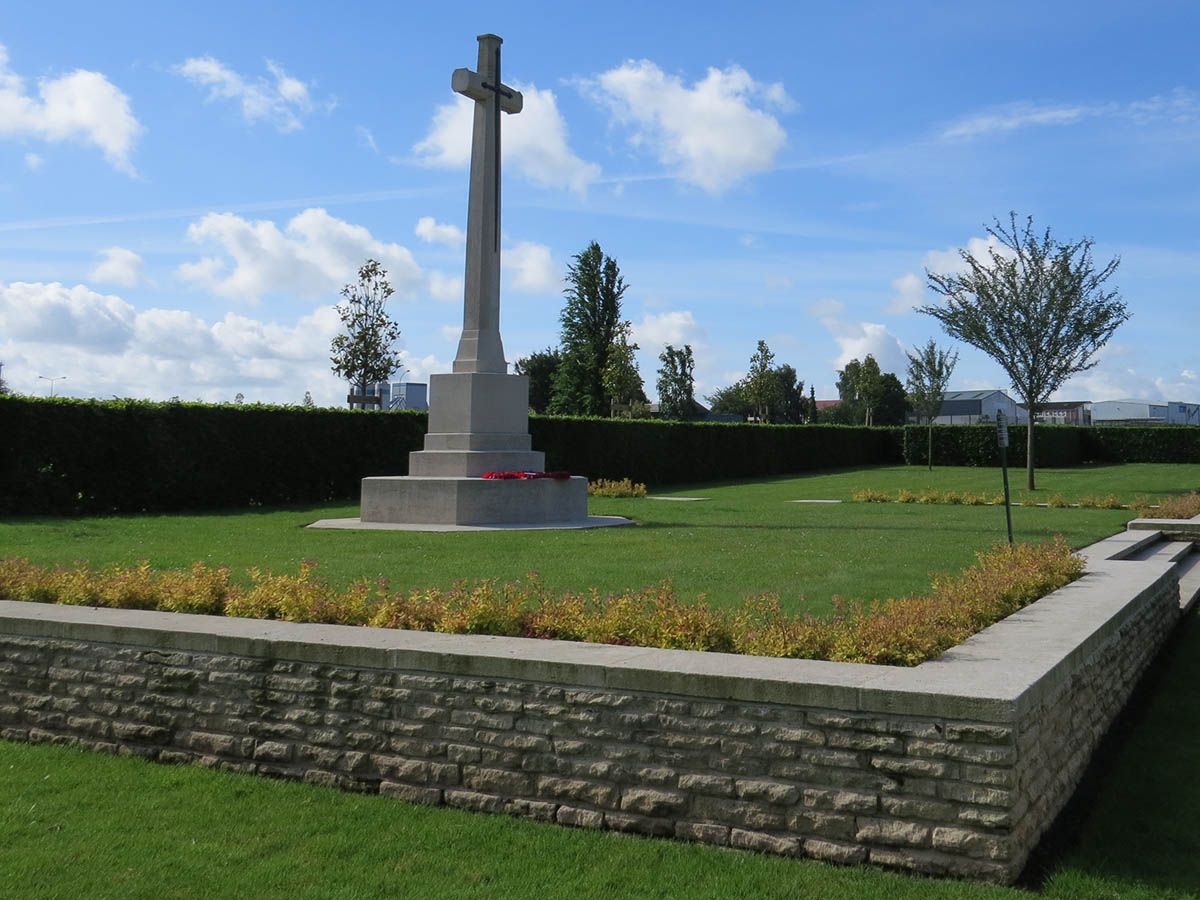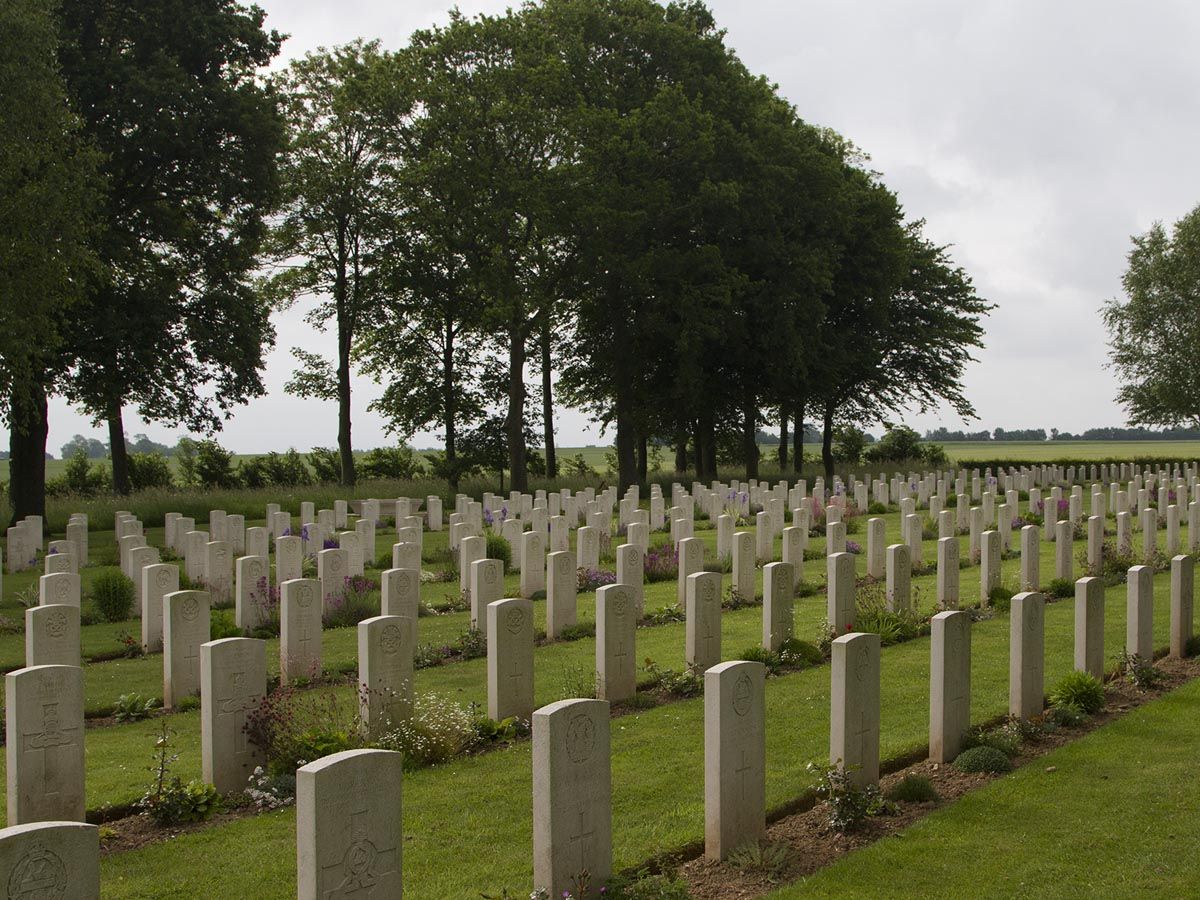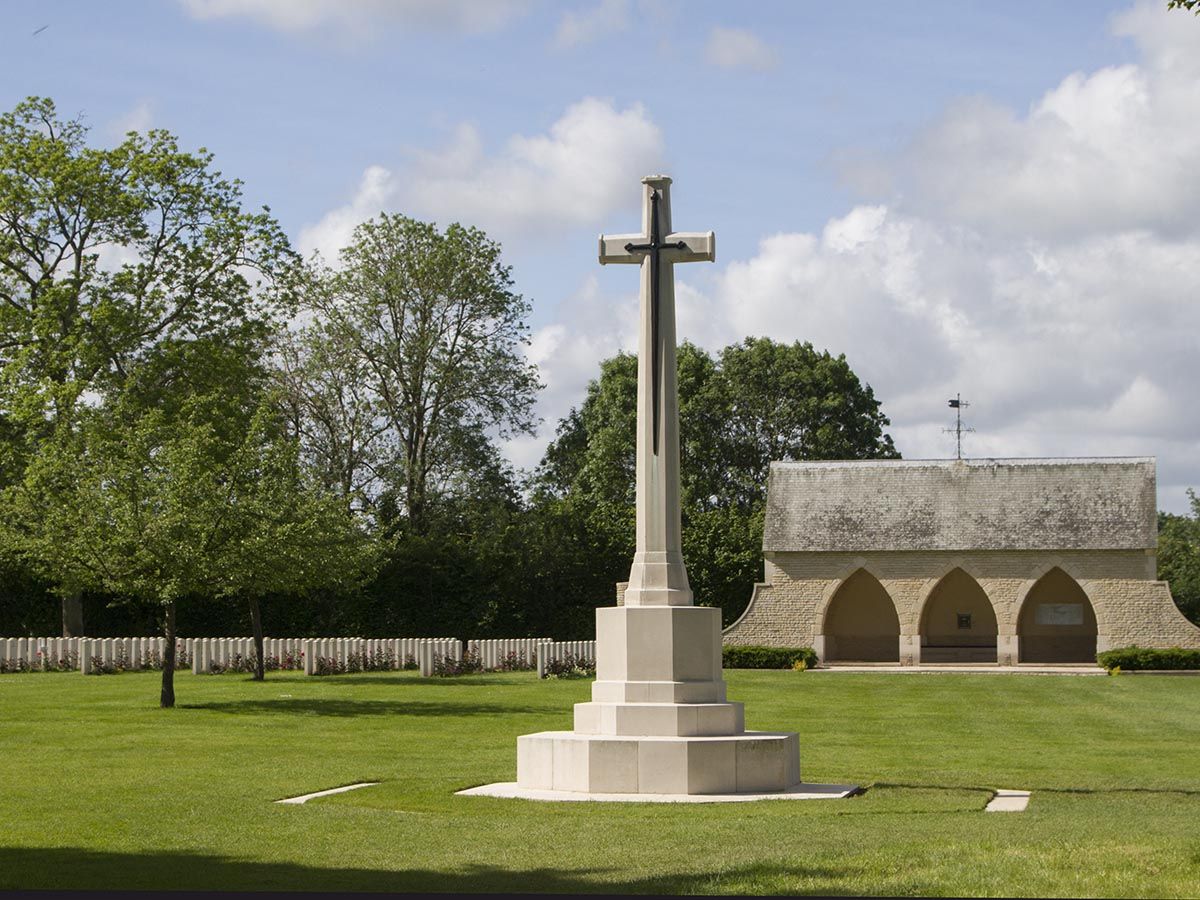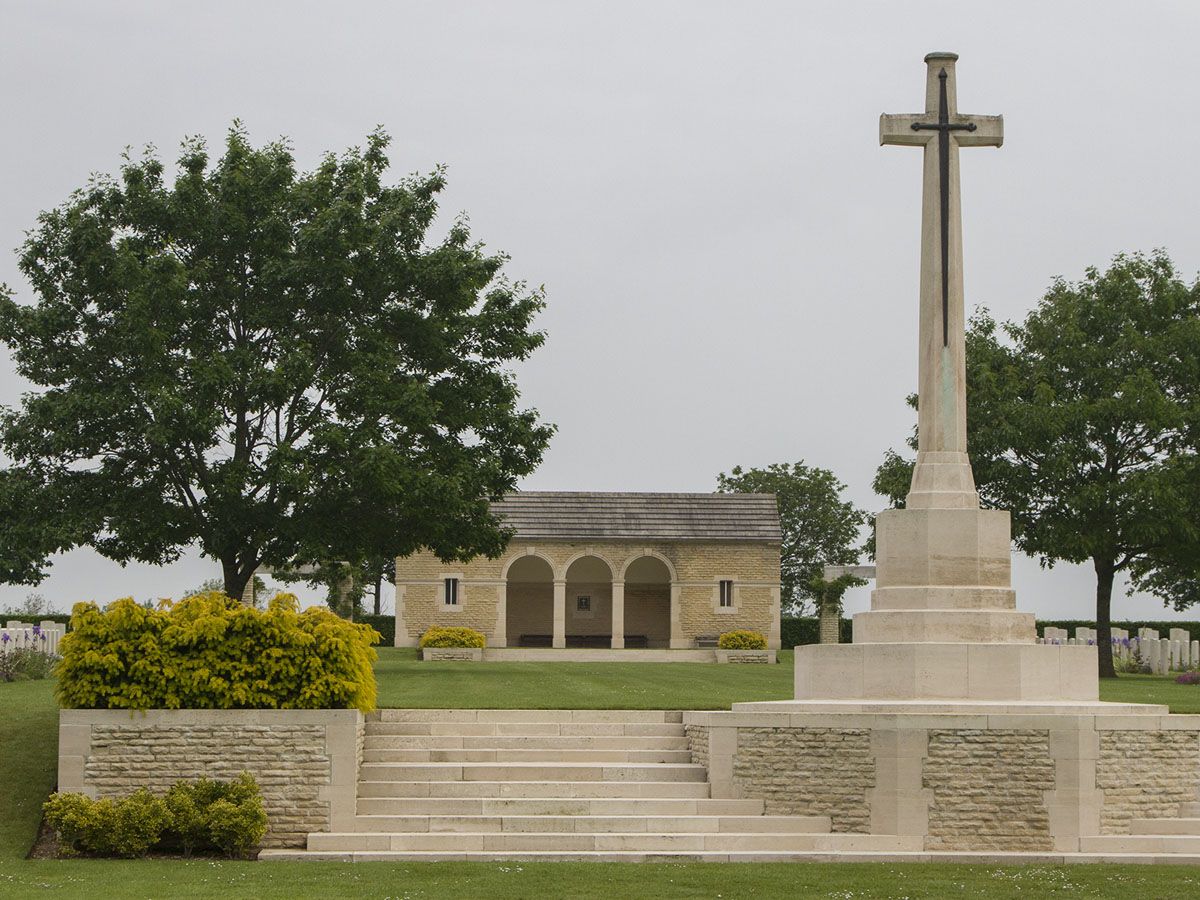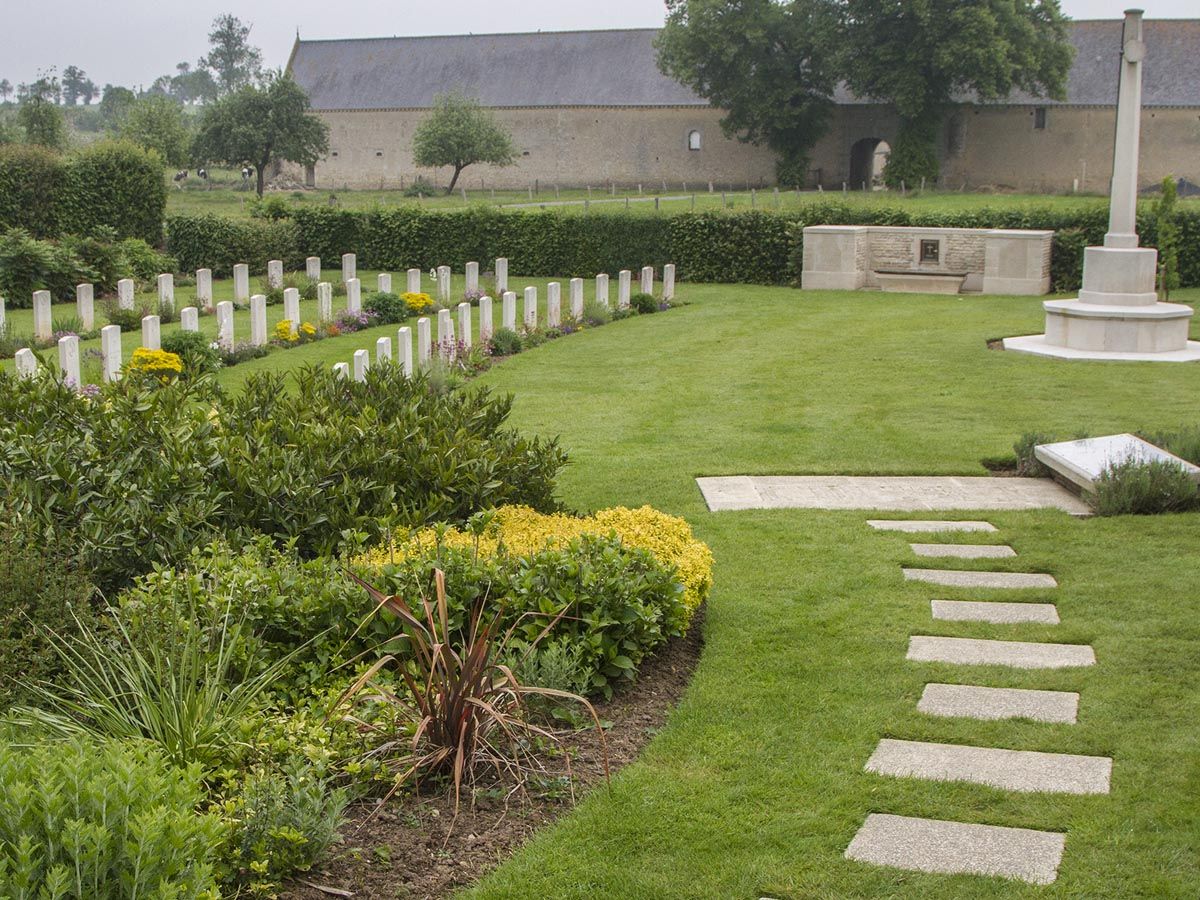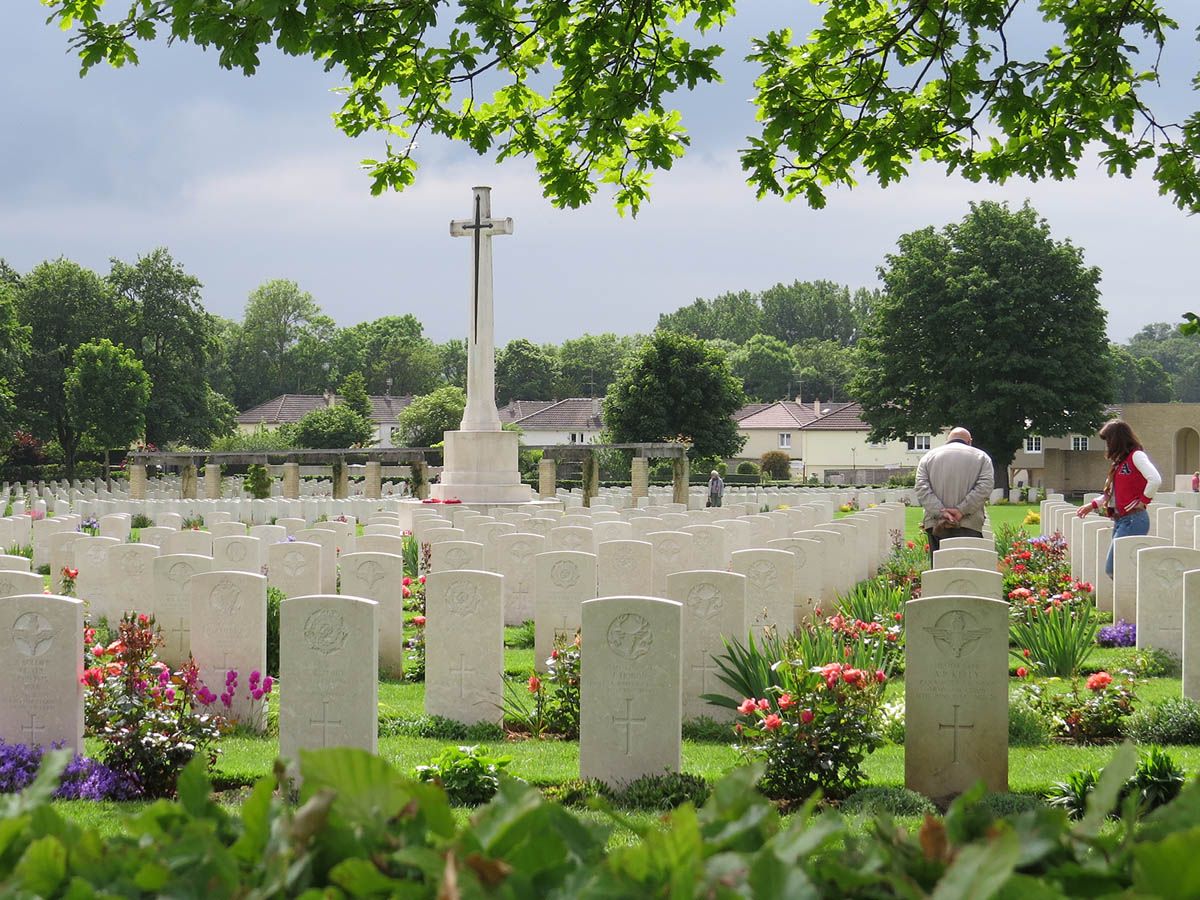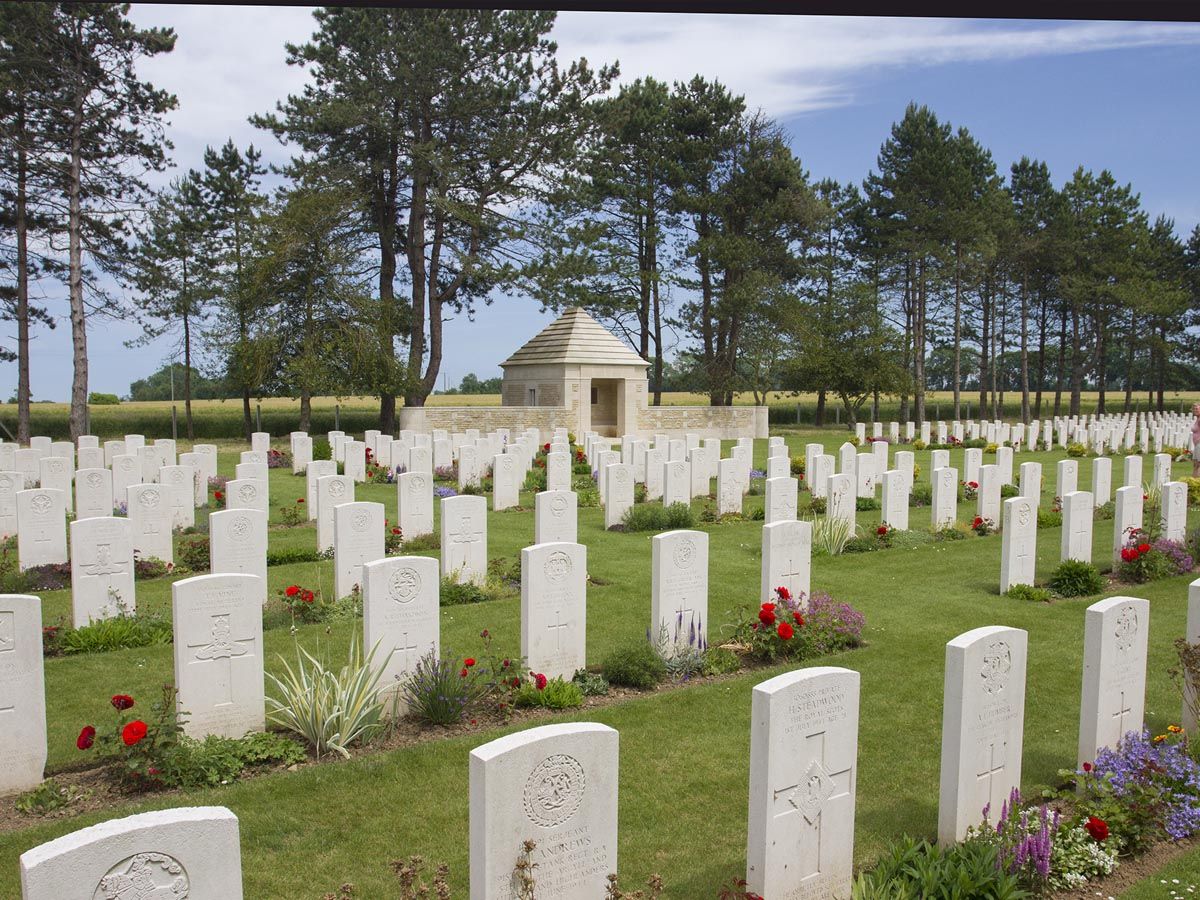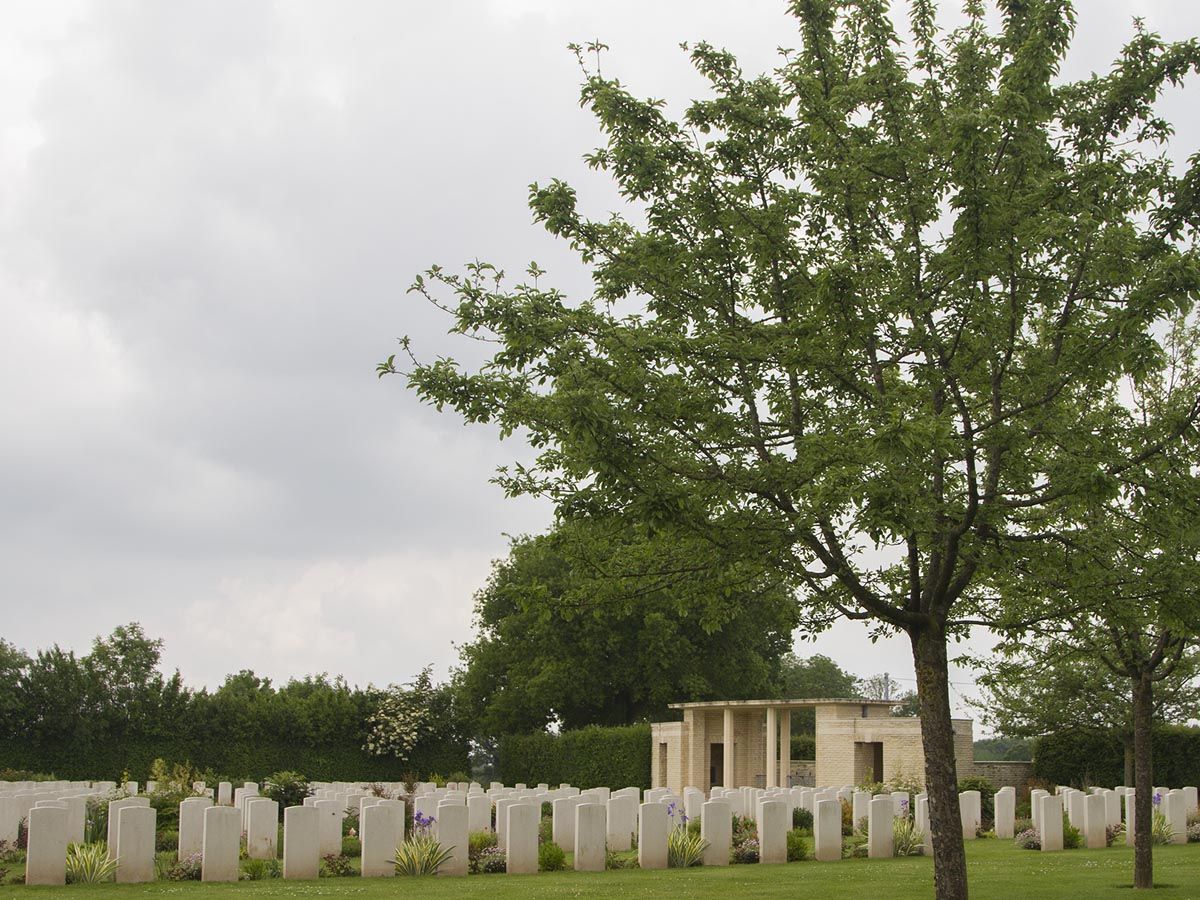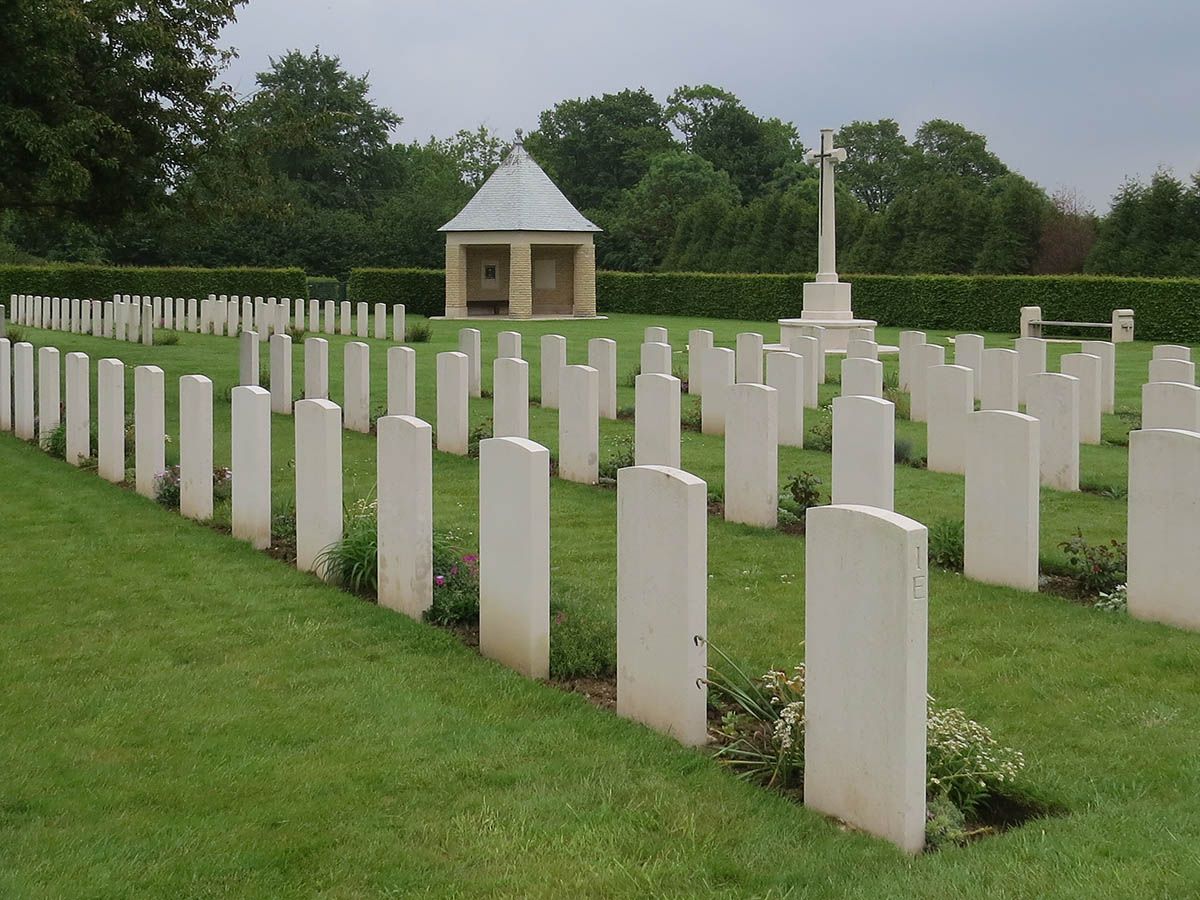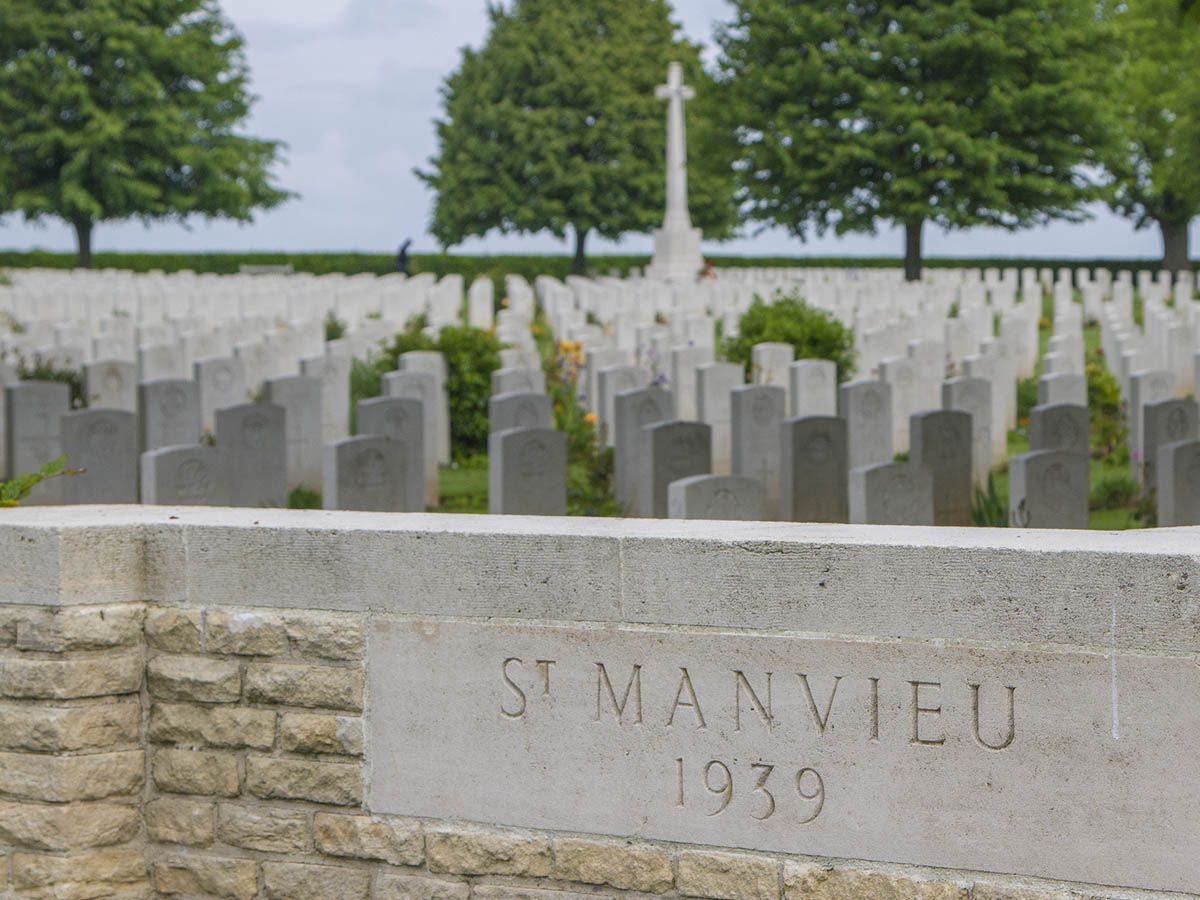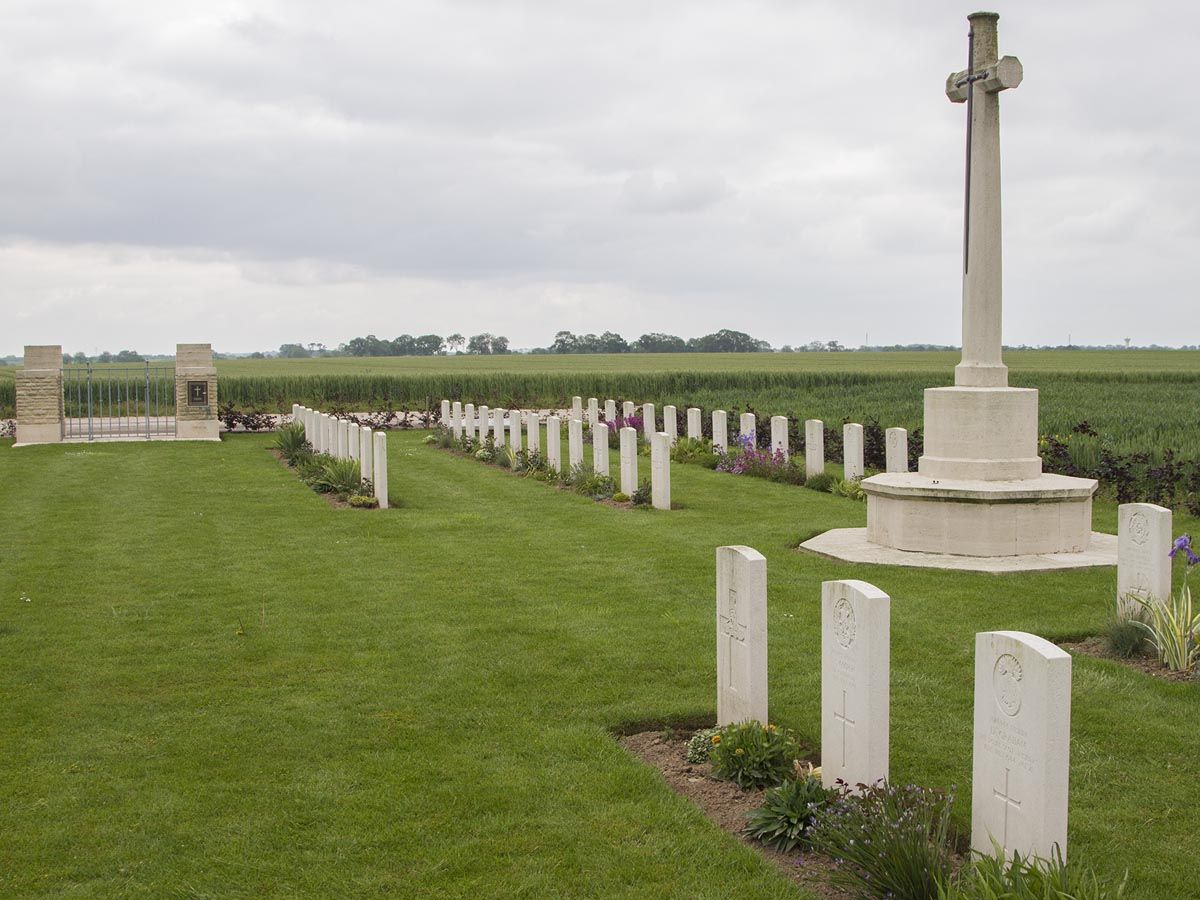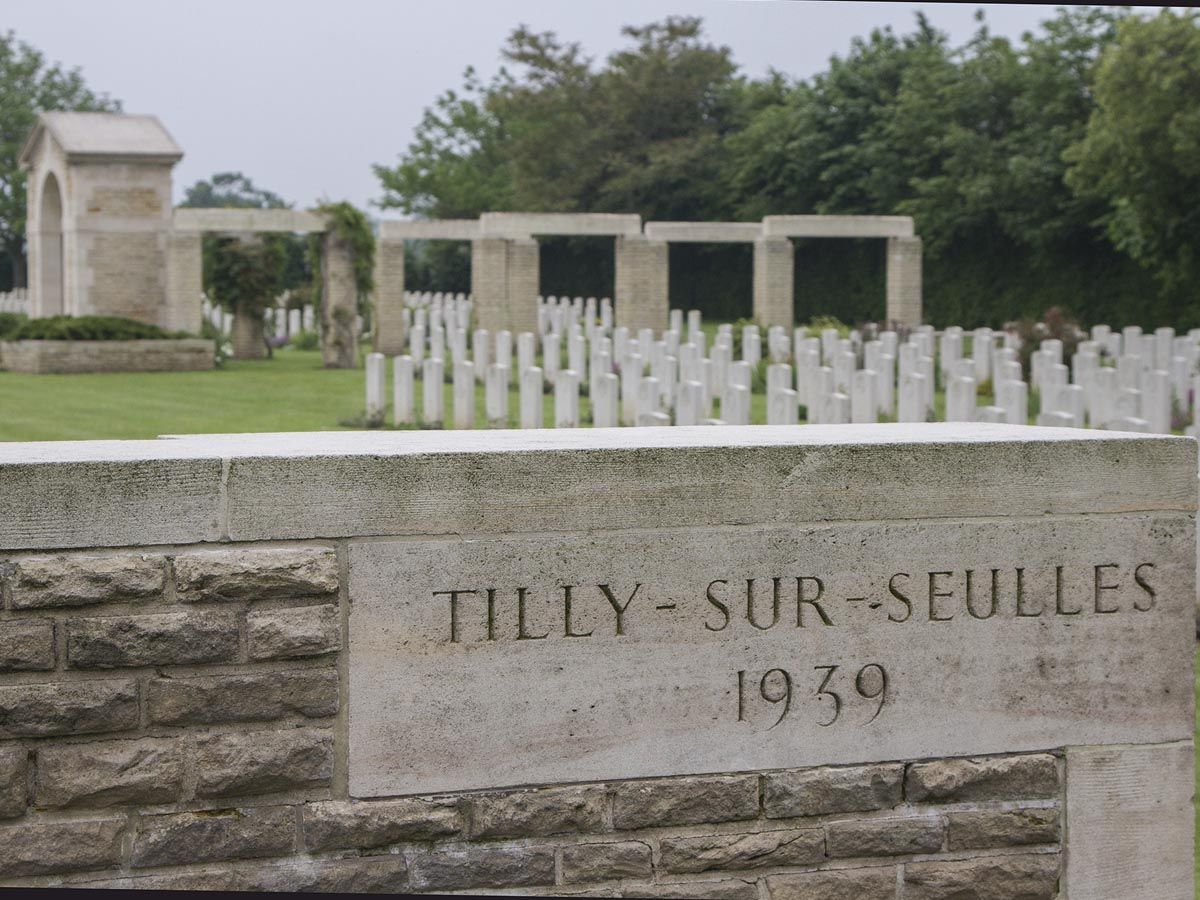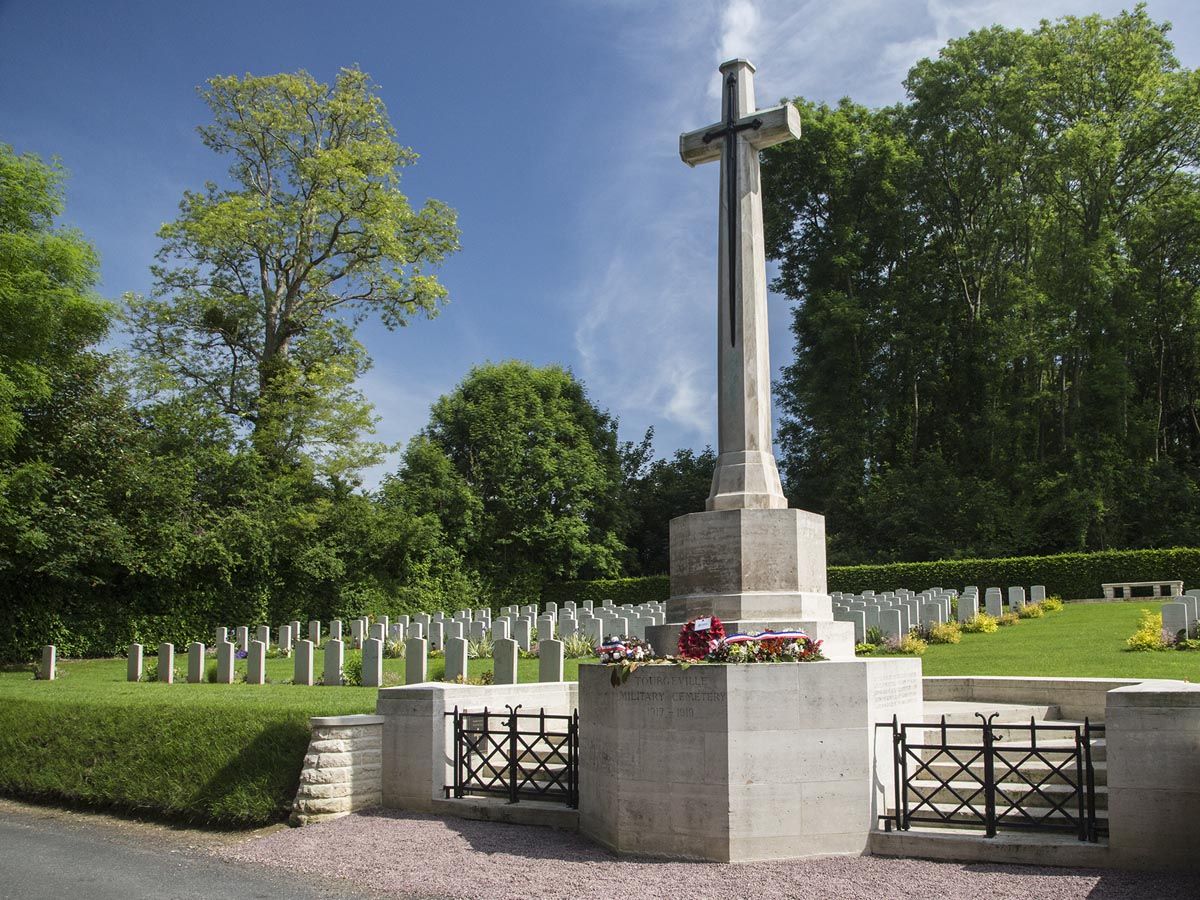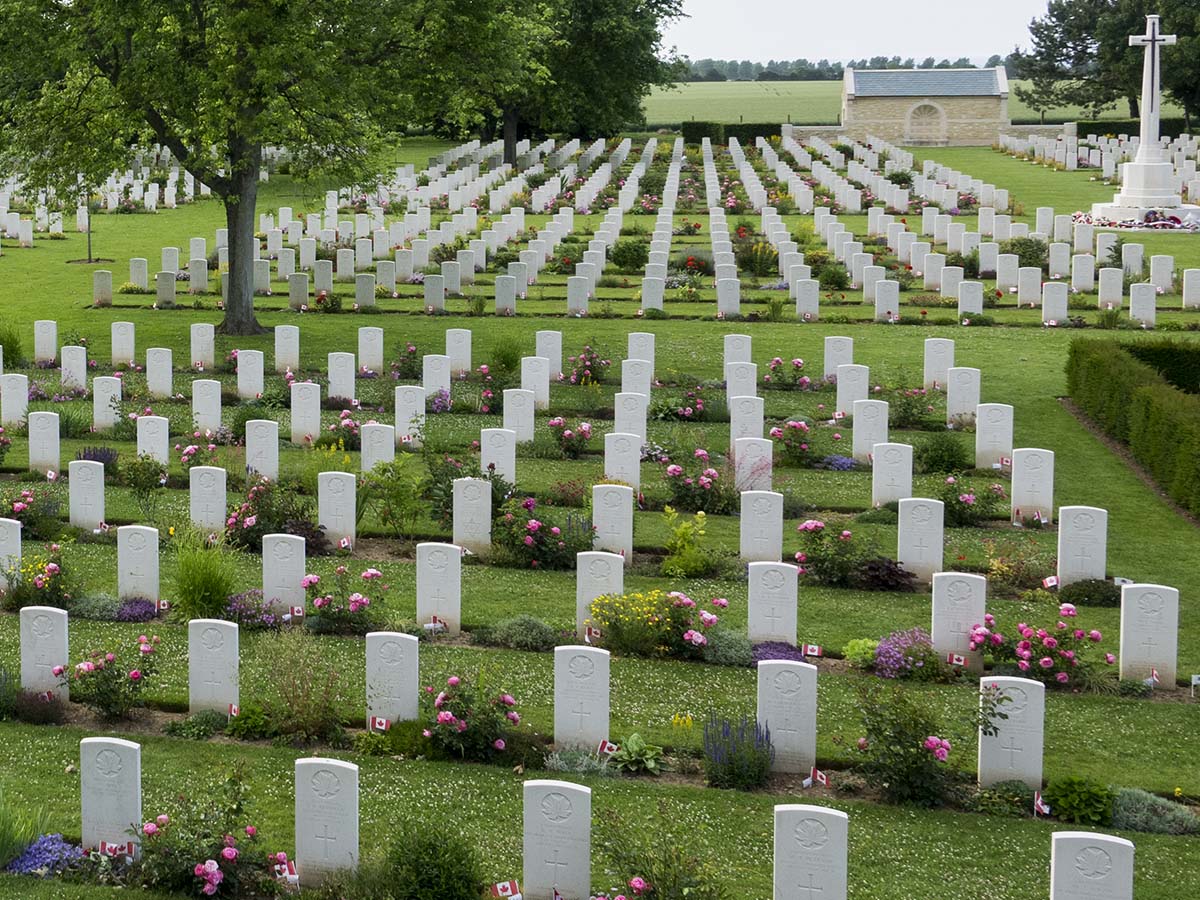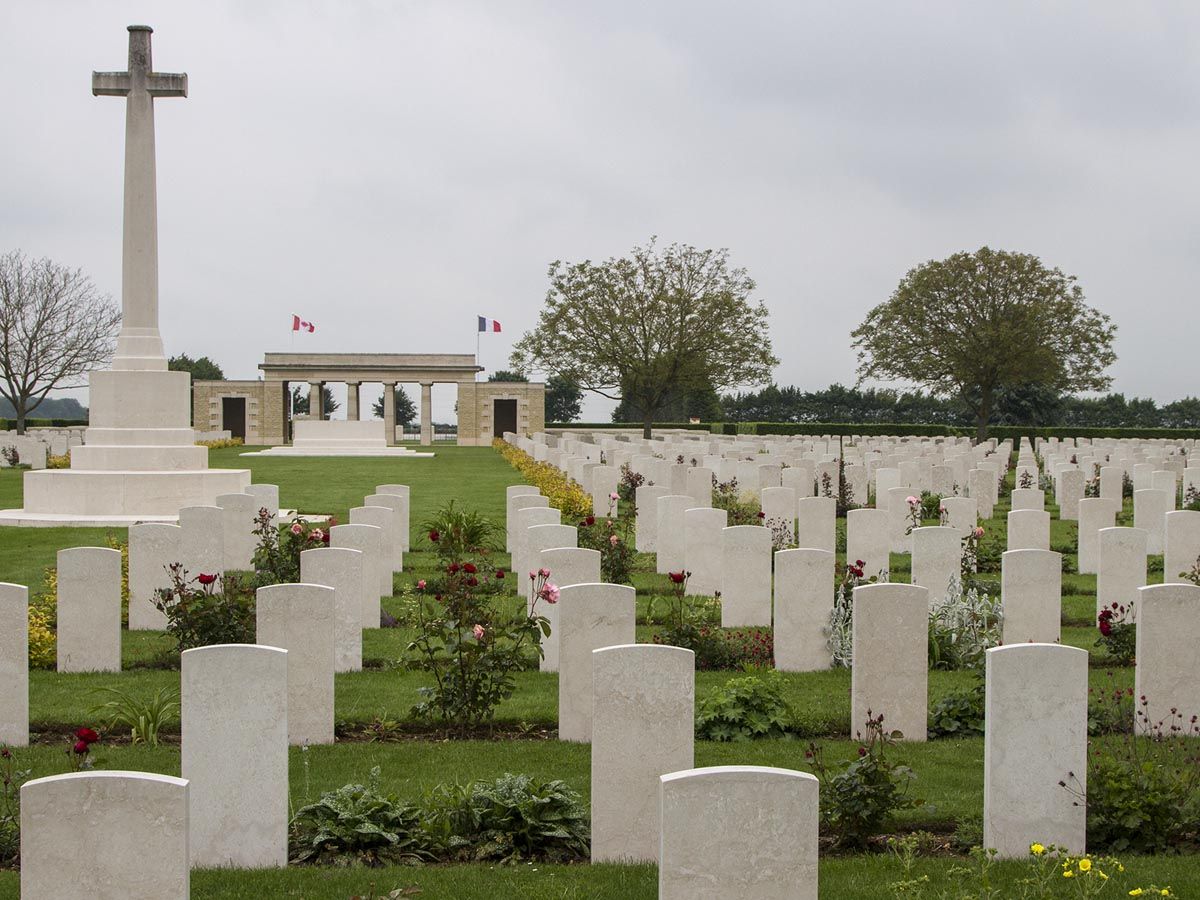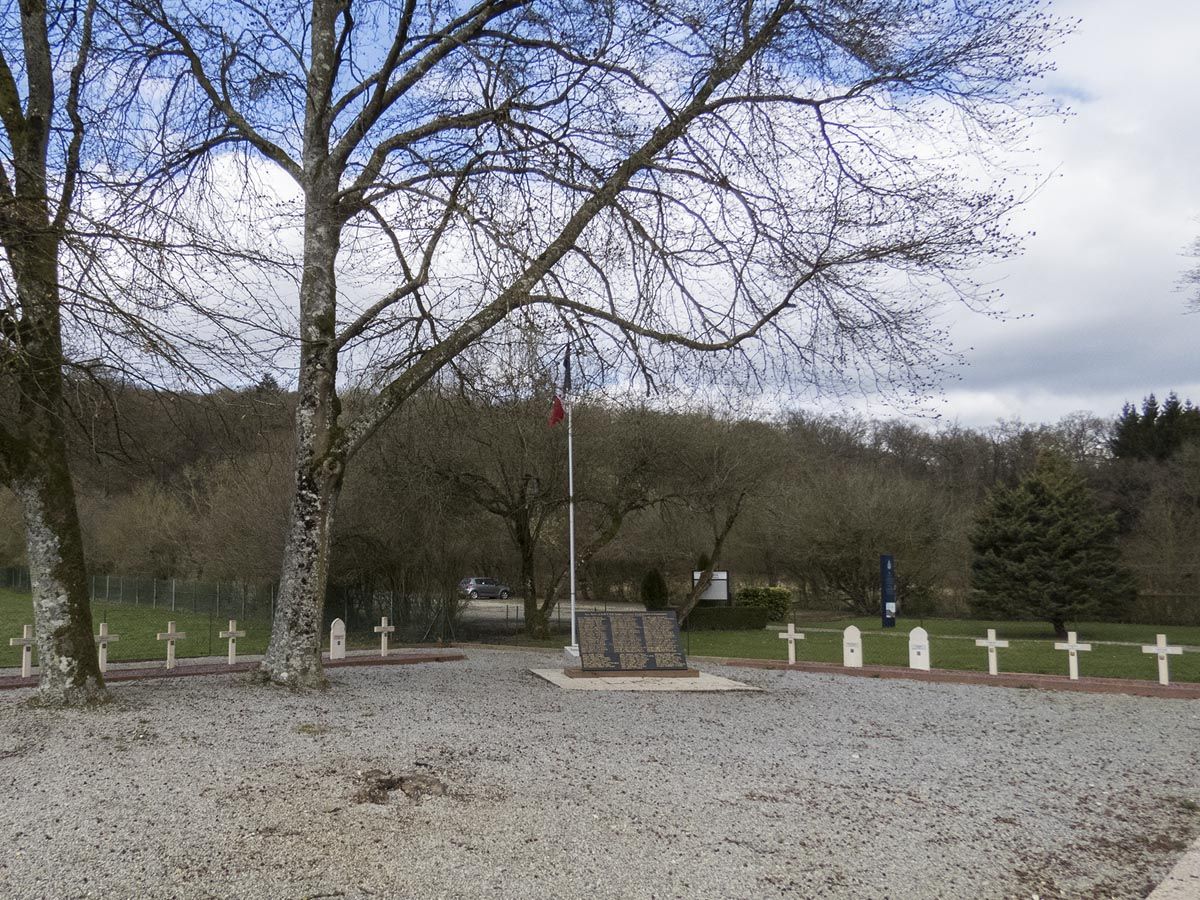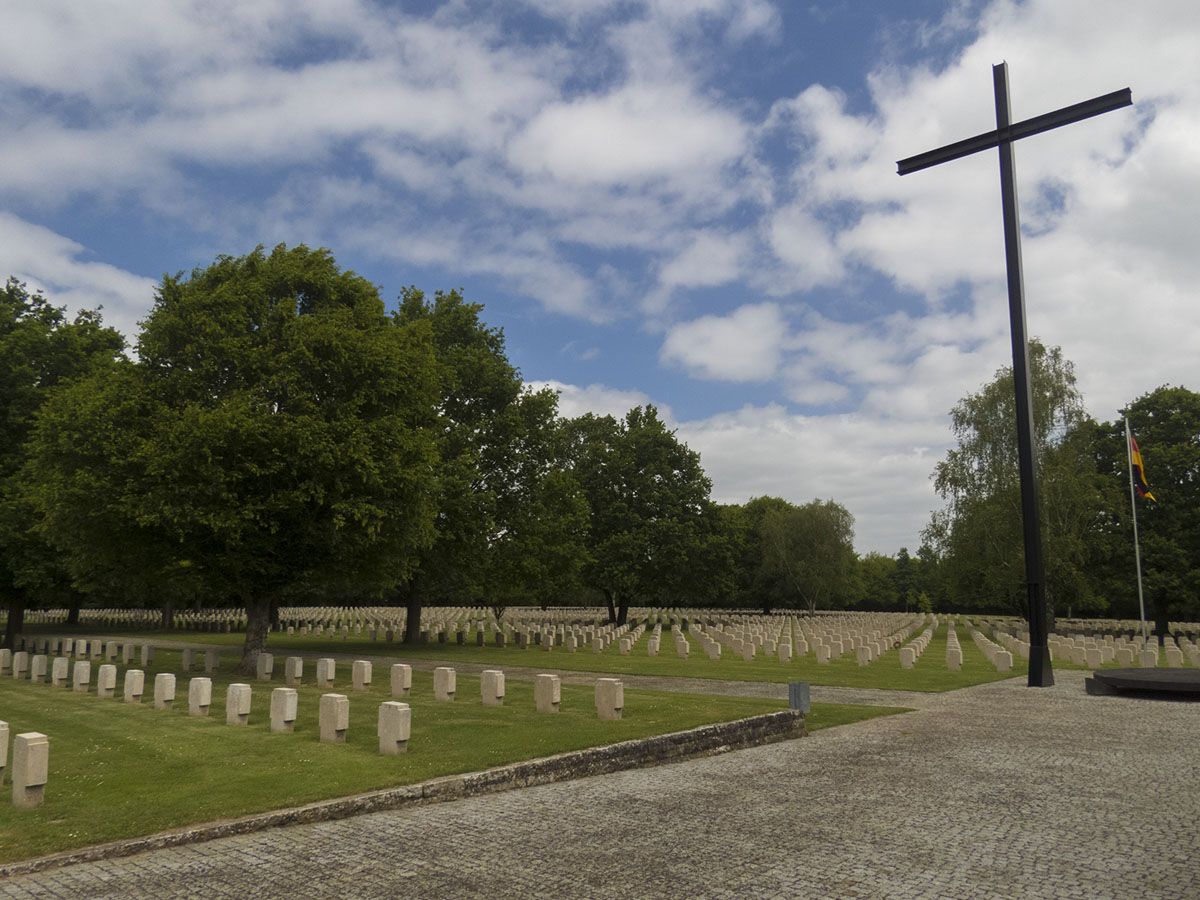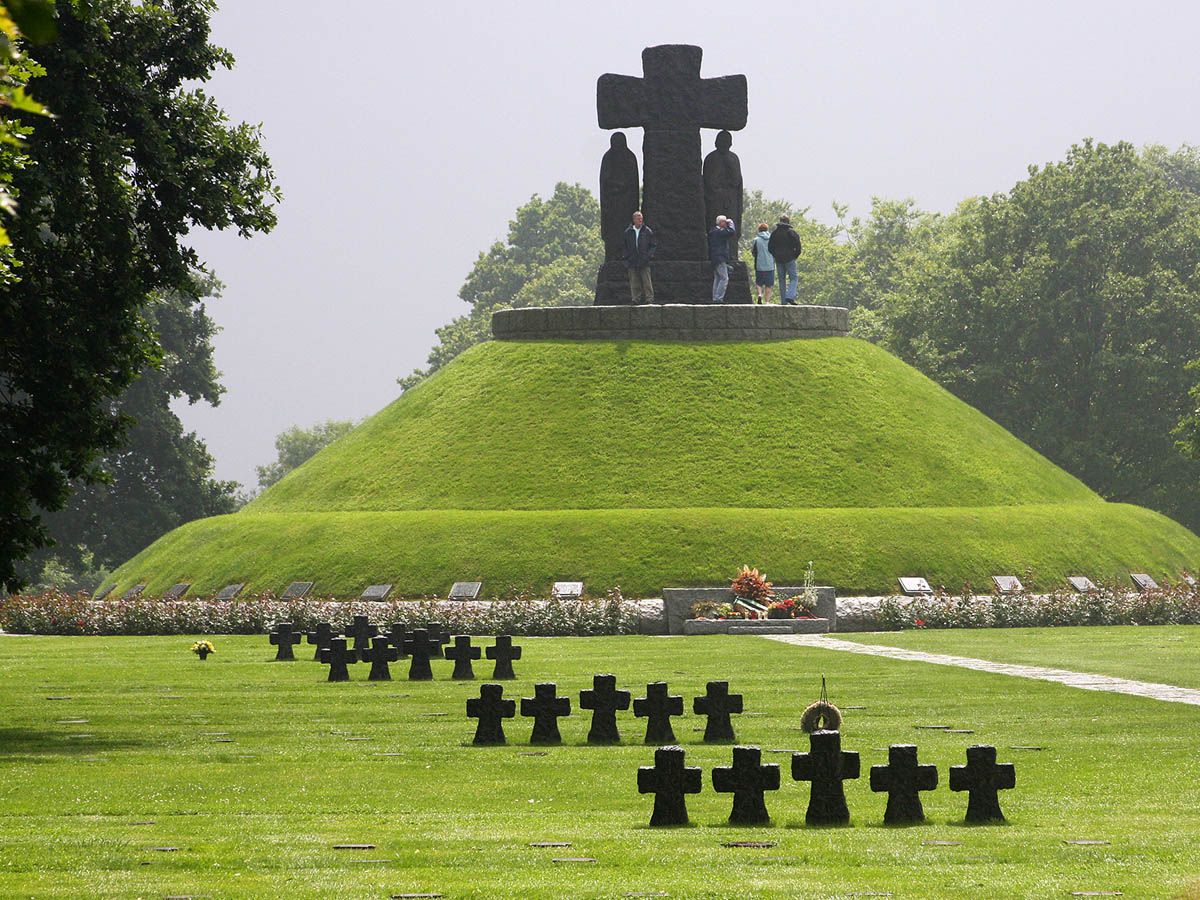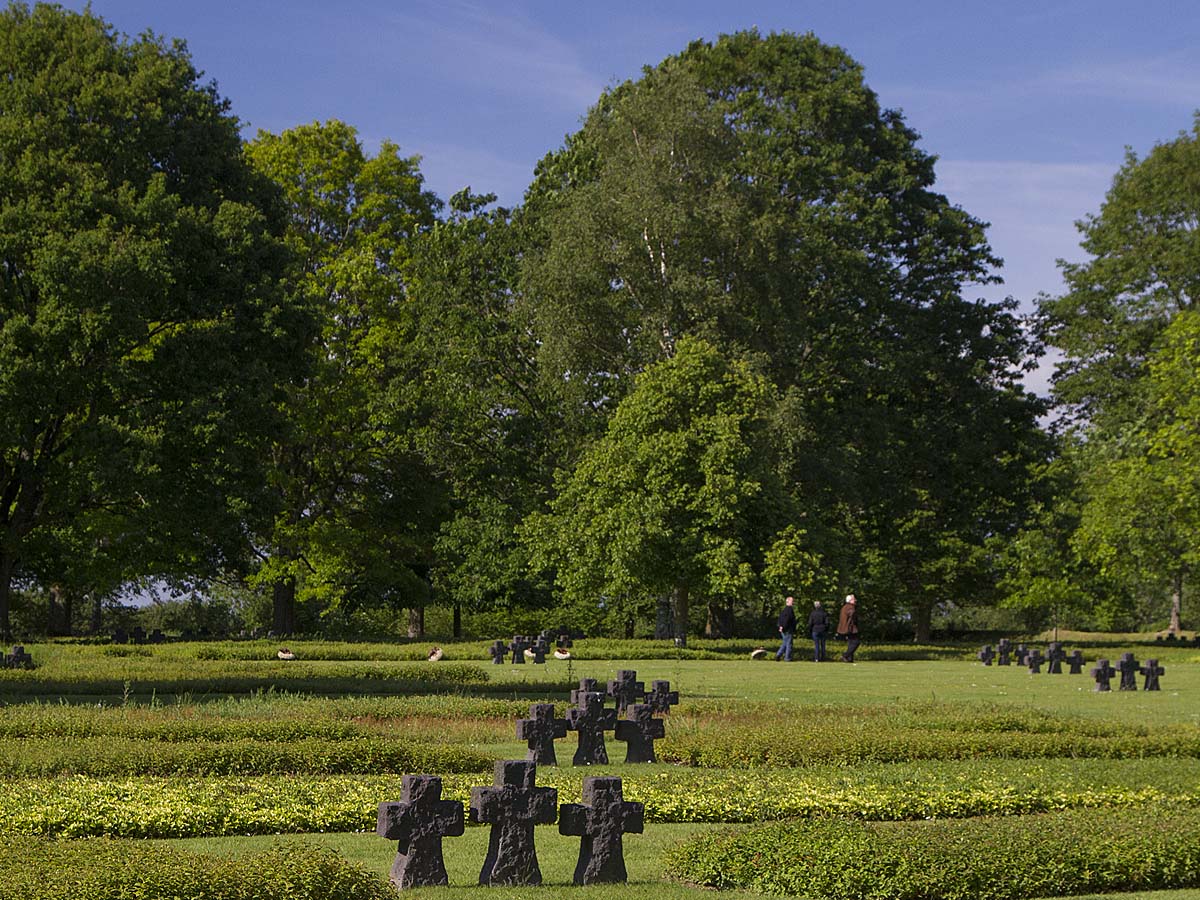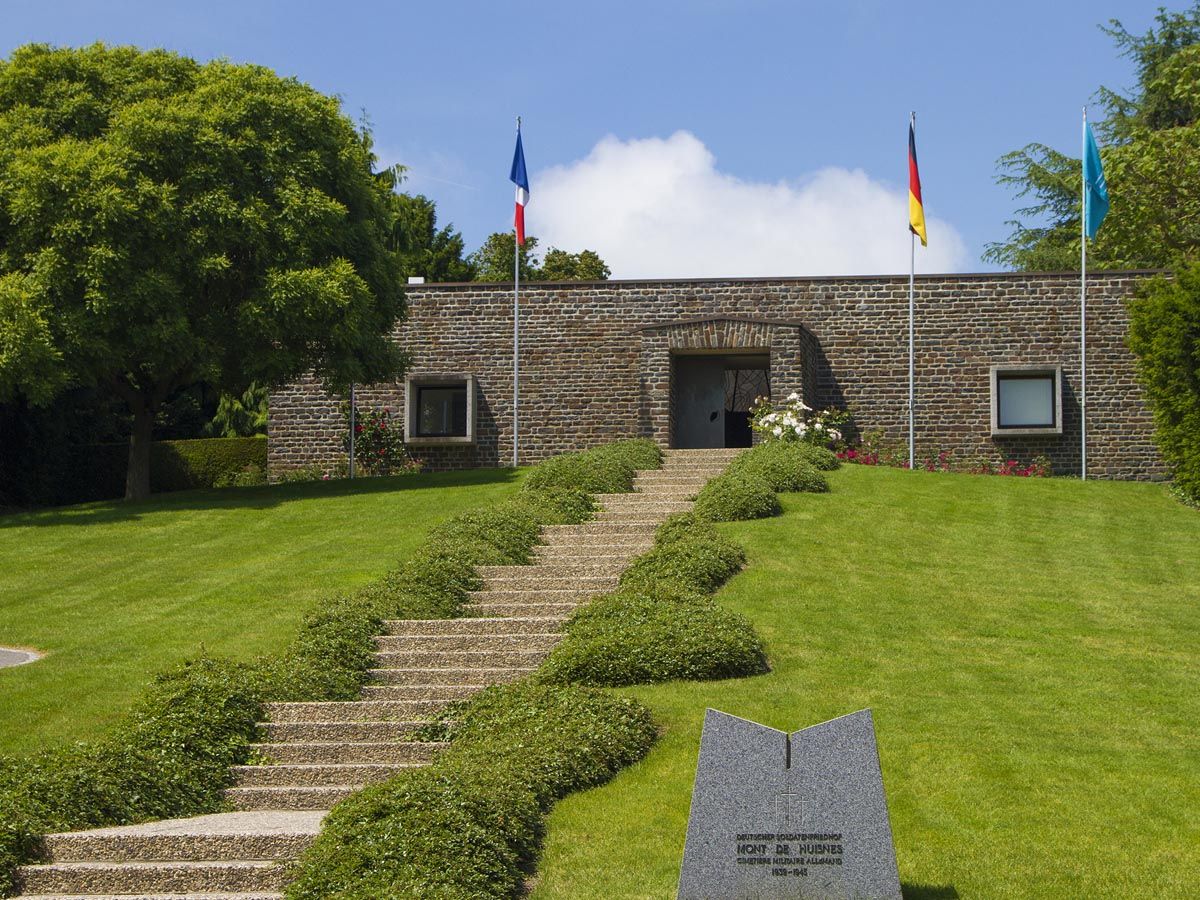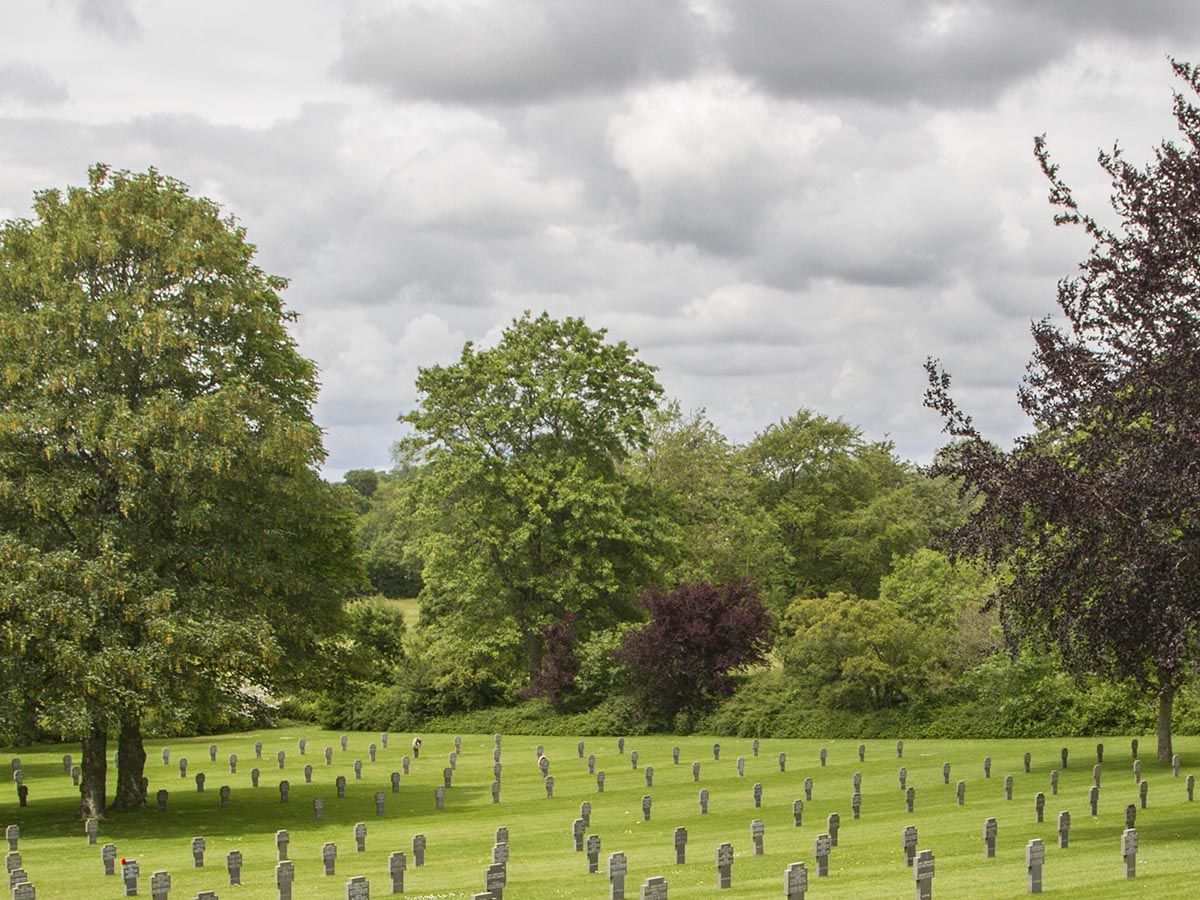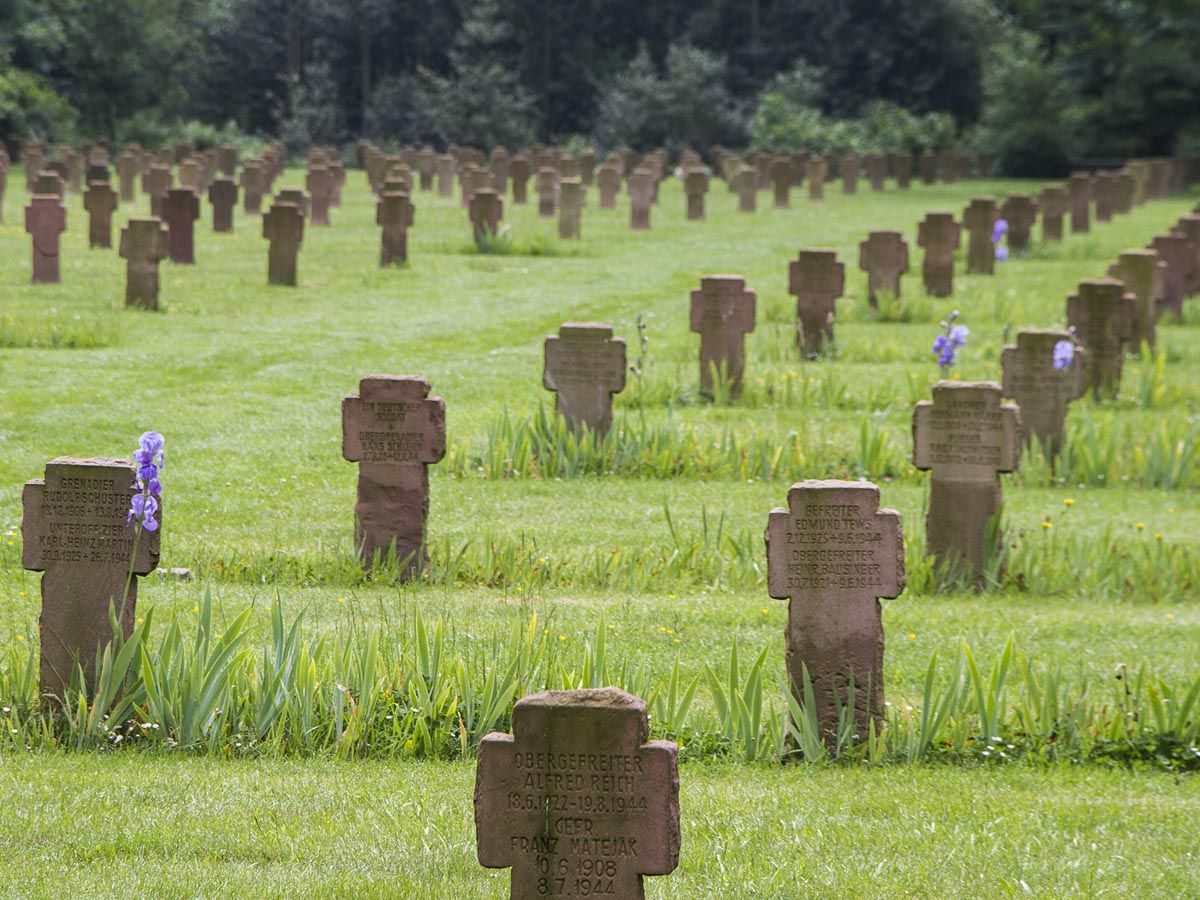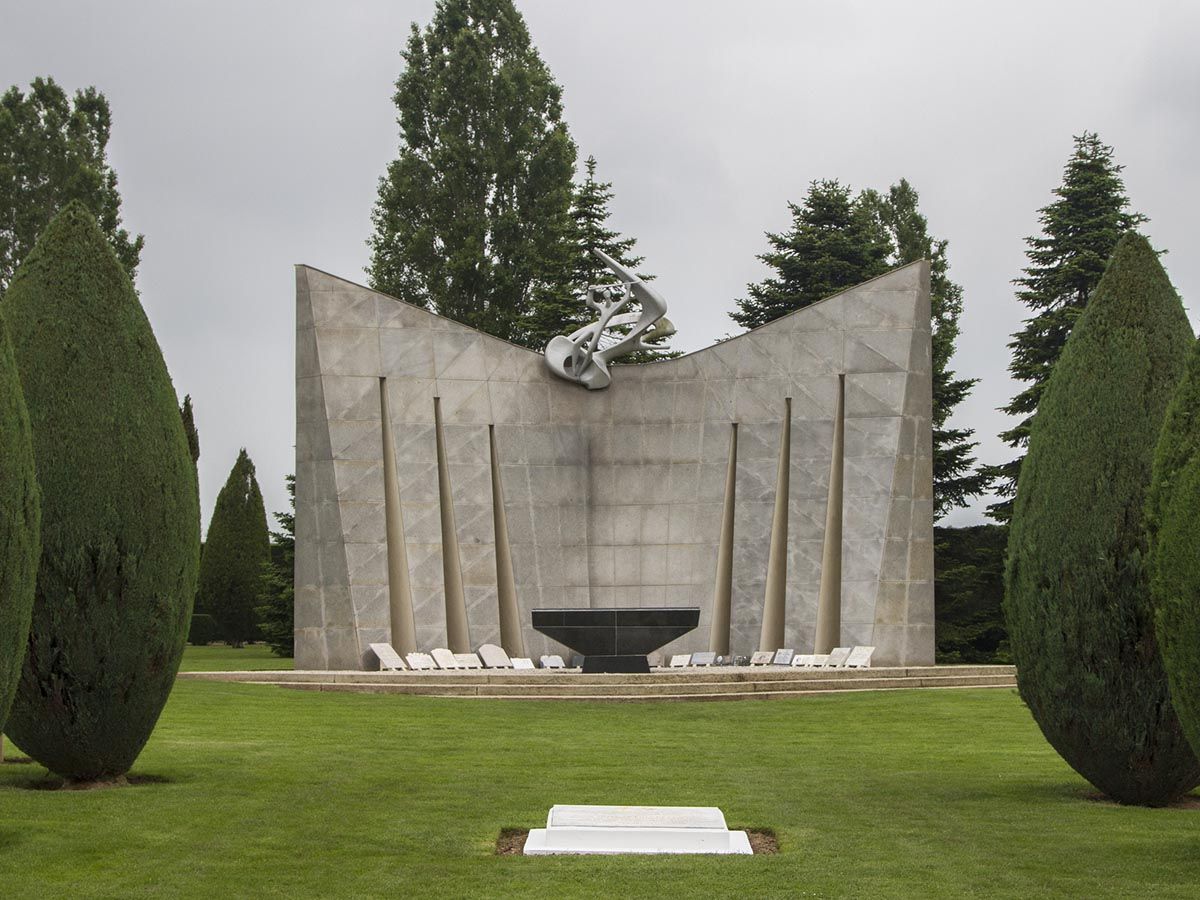Nestled in the peaceful Norman countryside, Fontenay-le-Pesnel War Cemetery stands as a solemn tribute to the brave men who fell during the fierce battles west and southwest of Caen in the summer of 1944. Located just 1km southeast of the village of Fontenay-le-Pesnel down a narrow track off the D139, this tranquil site offers visitors a moving glimpse into the human cost of the Second World War’s Normandy Campaign. The cemetery contains the final resting places of soldiers who made the ultimate sacrifice during the critical June-July 1944 operations that were essential to the Allied advance following D-Day.
As you walk among the immaculately maintained graves, you’ll feel a profound connection to history. The cemetery’s serene setting creates a reflective atmosphere where you can honor these fallen heroes while contemplating the price of freedom.
Whether you’re a history enthusiast, a family member tracing your roots, or simply a traveler seeking to understand France’s wartime past, Fontenay-le-Pesnel War Cemetery offers a meaningful stop on your Normandy journey.
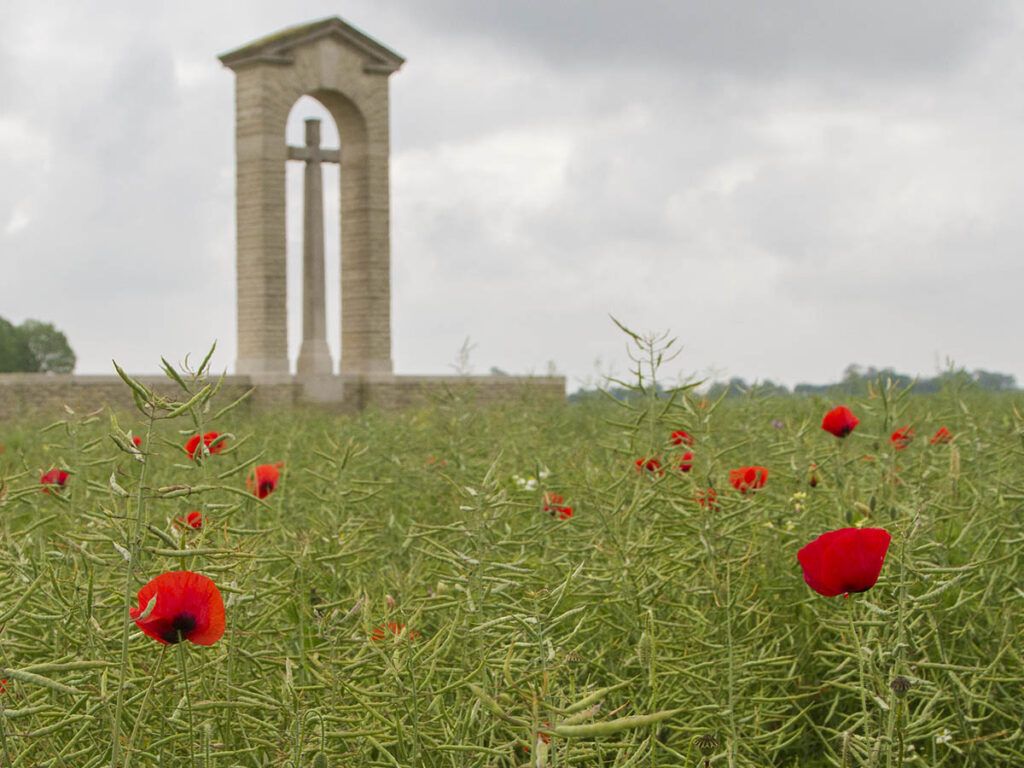
History and Significance
Fontenay-le-Pesnel War Cemetery stands as a solemn reminder of the sacrifice made by Commonwealth soldiers during the Battle of Normandy in 1944. Located 16 km west of Caen, this cemetery honors those who fell during the fierce fighting to liberate France from German occupation.
The Battle of Normandy
The Battle of Normandy began with D-Day landings on June 6, 1944, but continued with intense fighting throughout the region. Fontenay-le-Pesnel became a focal point of combat as Allied forces pushed inland from the beaches.
In the weeks following D-Day, British and Canadian troops fought bravely against determined German resistance in this area. The cemetery contains 519 burials, including 455 British soldiers, 5 Canadian soldiers, and 1 British airman, along with 59 German casualties.
Many of these soldiers fell during June and July 1944 in operations to capture strategic positions west and southwest of Caen. These battles were crucial in the Allied advance across Normandy.
Operation Overlord and Its Impact
Operation Overlord was the codename for the Allied invasion of Normandy. This massive military offensive marked the beginning of the end for Nazi Germany’s occupation of Western Europe.
The fighting around Fontenay-le-Pesnel was part of the broader strategy to push inland and secure territory beyond the beachheads. Allied forces faced fierce resistance as they moved through the bocage country—Normandy’s challenging hedgerow terrain.
As you walk through the cemetery today, you’ll see the final resting place of soldiers who contributed to the liberation of France. Their sacrifice helped secure the foothold needed for the eventual Allied victory in Europe.
The Commonwealth War Graves Commission now maintains this cemetery, ensuring these heroes are remembered with dignity and respect. When you visit, you’re walking on ground that witnessed a pivotal chapter in history.
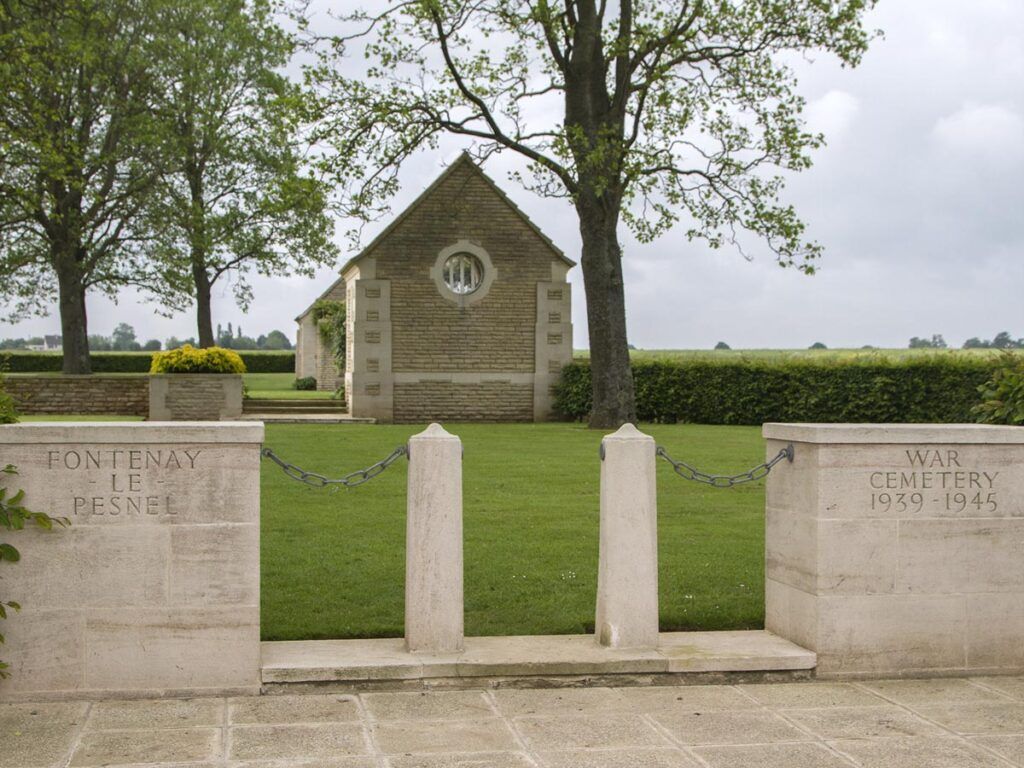
The Cemetery’s Design and Memorials
Fontenay-le-Pesnel War Cemetery features thoughtful design elements that honor the fallen soldiers of the 1944 Normandy campaign. The Commonwealth War Graves Commission (CWGC) created a peaceful final resting place that balances solemn remembrance with natural beauty.
Layout and Architectural Features
The cemetery contains 519 burials in total, with 460 Commonwealth and 59 German graves. As you enter through the small dirt road off the D139, you’ll notice the cemetery sits almost hidden among surrounding farmland, creating a sense of peaceful seclusion.
The layout follows the CWGC’s signature design principles. Neat rows of uniform white headstones stretch across well-maintained lawns. Each headstone bears the national emblem or regimental badge of the fallen soldier, along with their name, rank, unit, date of death, and age.
The cemetery’s entrance features a stone building housing the registry where you can look up information about those buried here. Stone walls enclose the perimeter, creating a sanctuary-like atmosphere that invites quiet reflection.
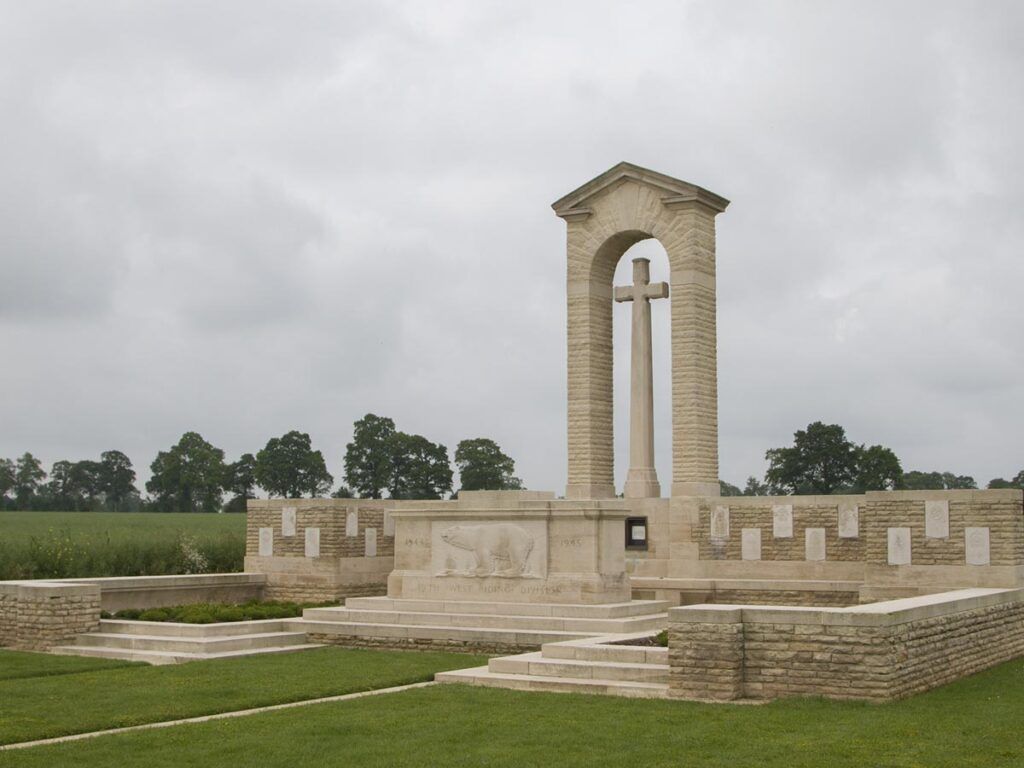
Notable Memorials and Monuments
At the center of the cemetery stands the Cross of Sacrifice, a design element present in all CWGC cemeteries. This large stone cross mounted on an octagonal base with a bronze sword symbolizes the military character of the burials and the sacrifice made.
You’ll find the Stone of Remembrance with the inscription “Their Name Liveth For Evermore” – words chosen by Rudyard Kipling who lost his own son in World War I. This memorial honors those whose remains could not be identified.
The cemetery contains graves of soldiers primarily from the 49th (West Riding) and 50th (Northumbrian) Divisions who died fighting to liberate the area west of Caen in June-July 1944. Each headstone tells a personal story of sacrifice, with many soldiers as young as 19 or 20 years old.
The Soldiers at Rest
Fontenay-le-Pesnel War Cemetery serves as the final resting place for over 500 Commonwealth servicemen who gave their lives during the Normandy campaign. The cemetery contains a mix of forces who fought in the battles west and southwest of Caen in June and July 1944.
Commonwealth Forces
The majority of those laid to rest at Fontenay-le-Pesnel are Commonwealth soldiers who died fighting to liberate France. More than 500 Commonwealth casualties from the Second World War are commemorated here. These brave men were primarily involved in the fierce battles that raged to the west and southwest of Caen during the summer of 1944.
As you walk among the immaculately maintained graves, you’ll notice most soldiers belonged to units that participated in Operation Epsom and subsequent operations to capture Caen. The headstones bear the insignia of various regiments that fought in this sector.
Many of the fallen were young men in their twenties, some as young as 18 or 19. Each grave tells a personal story of sacrifice, with names, ranks, and dates of death carefully recorded on the white Portland stone markers.
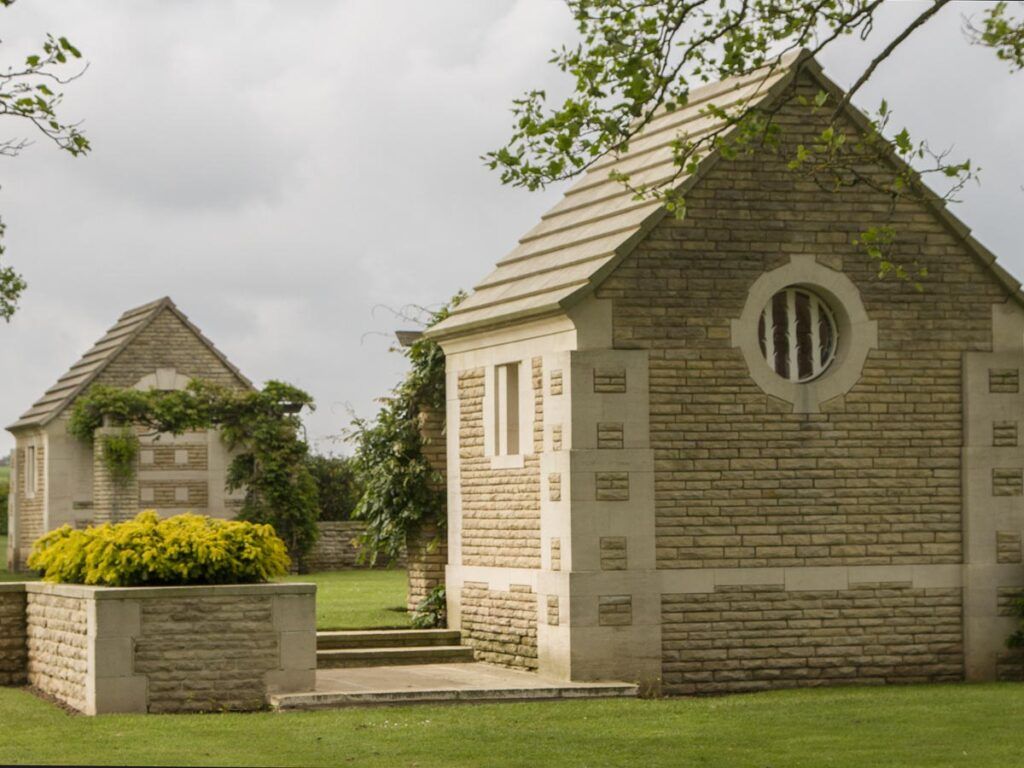
Other Allied Forces
While the cemetery is primarily dedicated to Commonwealth forces, you’ll find representatives from other Allied nations who fought alongside British and Canadian troops. These graves represent the multinational effort to liberate Europe.
American forces primarily have their own dedicated cemeteries elsewhere in Normandy, but the interconnected nature of the Allied campaign means soldiers of various nationalities fought in close proximity.
Some Polish, Free French, and other Allied personnel who served within Commonwealth formations may be found here. Their presence demonstrates the truly international nature of the fight against Nazi occupation.
German Soldiers
German casualties from the Normandy campaign are not buried at Fontenay-le-Pesnel. Instead, German soldiers who fell in this region were interred at dedicated German military cemeteries elsewhere in Normandy.
The primary German cemetery for this area contains graves of soldiers who died in several French departments including Eure, Orne, Seine-Maritime, and Eure-et-Loir during the fighting in 1944.
Unlike Allied cemeteries with their individual headstones, German war cemeteries often feature simple crosses or markers, sometimes with multiple names per marker due to the large number of casualties. These cemeteries present a stark contrast to Allied burial grounds but serve an equally important memorial purpose.
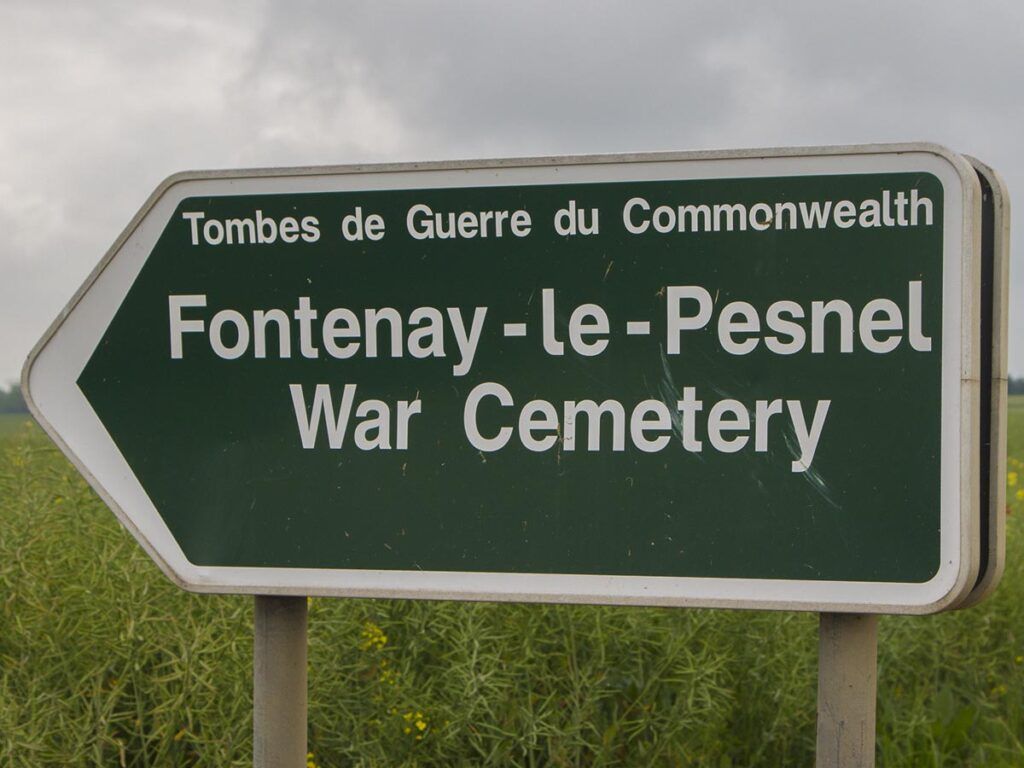
Visiting Fontenay-le-Pesnel War Cemetery
Fontenay-le-Pesnel War Cemetery offers a solemn place to honor those who fell during the battles west of Caen in the summer of 1944. This peaceful memorial in Normandy’s Calvados region provides visitors a chance to reflect on the sacrifices made during the Allied push following D-Day.
How to Get There
The cemetery is located approximately 1 km southeast of the village of Fontenay-le-Pesnel, accessible via a narrow track off the D139 road. If you’re using GPS, search for “Fontenay-le-Pesnel War Cemetery” rather than just the village name to ensure accurate directions.
From Caen, head west about 16 km on the N13, then follow signs toward Tessel and Fontenay-le-Pesnel. The cemetery isn’t prominently signposted until you’re quite close, so keep your eyes open once you’re in the area.
Public transportation is limited, so renting a car is your best option. Parking is available, though spaces may be limited during summer months or anniversary commemorations.
Nearby Accommodations
While Fontenay-le-Pesnel itself has limited lodging options, you’ll find several charming possibilities in the surrounding area.
Bed & Breakfasts:
- Numerous family-run chambres d’hôtes in nearby villages offer authentic Norman hospitality
- Many include delicious homemade breakfasts featuring local products
Recommended hotels:
Vacation Rentals:
- Several gîtes (holiday cottages) available in neighboring villages
- Ideal for families or longer stays
- Typically require minimum stays of 2-3 nights
Book accommodations well in advance if visiting during summer or around D-Day anniversary events in June.
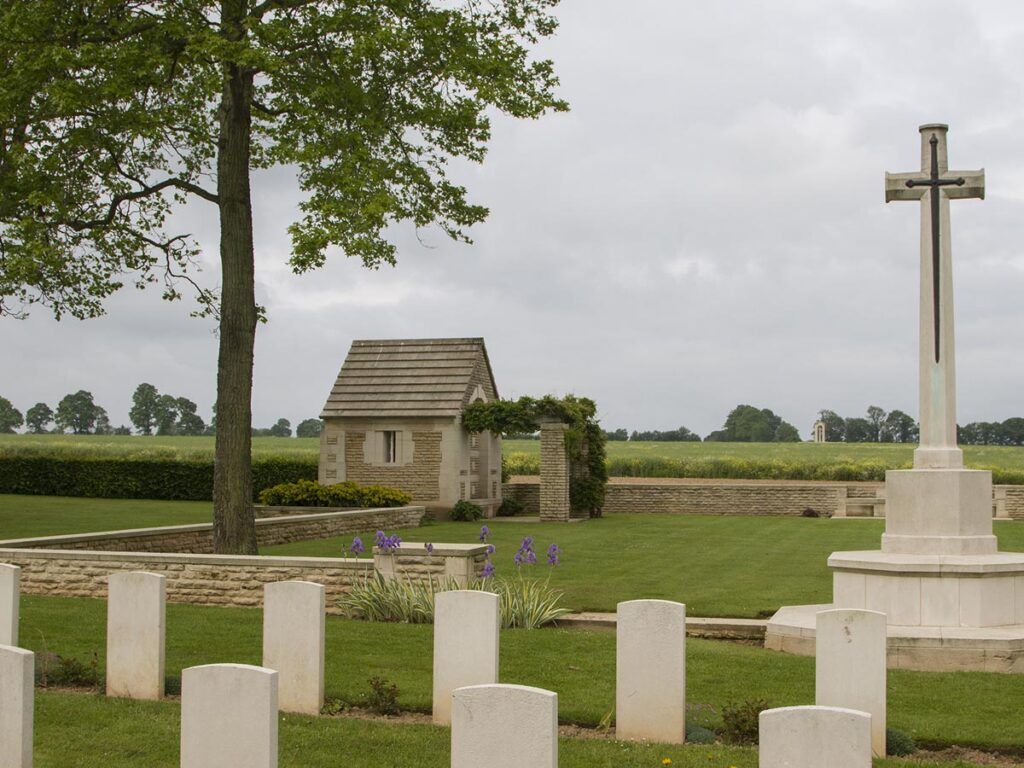
Tours
Several tour companies offer guided visits to Fontenay-le-Pesnel as part of broader Normandy battlefield tours.
Specialized WW2 Tours:
- Expert guides provide historical context about the cemetery and battles fought nearby
- Often combine visits with other sites related to Operation Overlord
- Range from half-day excursions to multi-day comprehensive tours
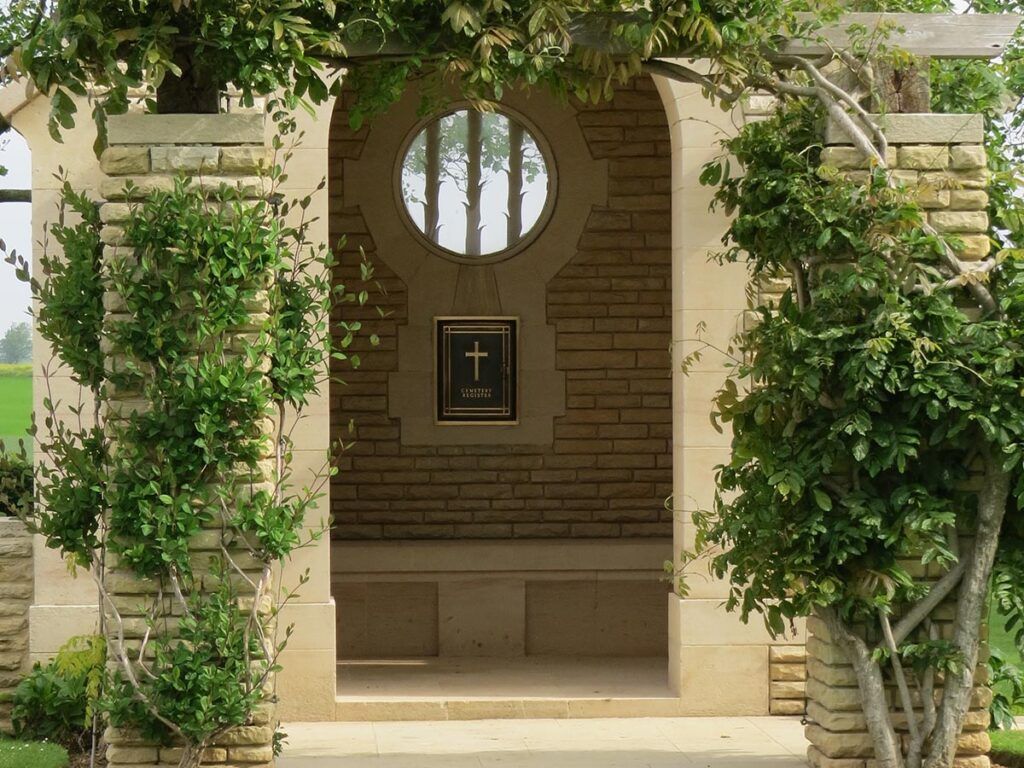
You can also arrange for private guides specialized in the Normandy campaign. These local experts often have personal connections to the history and can provide insights not found in guidebooks.
Recommended D-Day Tours from Paris:
- From Paris: Normandy D-Day Beaches Day Trip
- From Paris: 2-Day Normandy & Brittany Tour
- Normandy American D-Day Experience (From Bayeux Station)
Recommended D-Day Tours from Bayeux:
- From Bayeux: American D-Day Sites in Normandy Full-Day Tour
- From Bayeux: American D-Day Sites in Normandy Half-Day Tour
- From Bayeux: Half-Day Normandy WWII Sidecar Tour
- Full-Day US Battlefields of Normandy Tour from Bayeux
Recommended Private D-Day Tours:
- From Paris: Normandy D-Day Landing Beaches Full-Day Tour
- From Rouen: Normandy D-Day Beaches Private Full-Day Tour
- Private Tour: Rouen, Bayeux, and Falaise Day Trip from Bayeux
- Normandy WWII Private Half-day Sidecar Tour From Bayeux
Recommended Band of Brothers Tours:
Self-guided visits are equally rewarding. The Commonwealth War Graves Commission maintains visitor information at the site that explains the cemetery’s significance and the units that fought in the area during the summer of 1944.
Nearby Points of Interest
Fontenay-le-Pesnel War Cemetery is surrounded by several significant historical sites that enrich your visit to this solemn place. The Normandy region offers many opportunities to deepen your understanding of D-Day operations and World War II history.
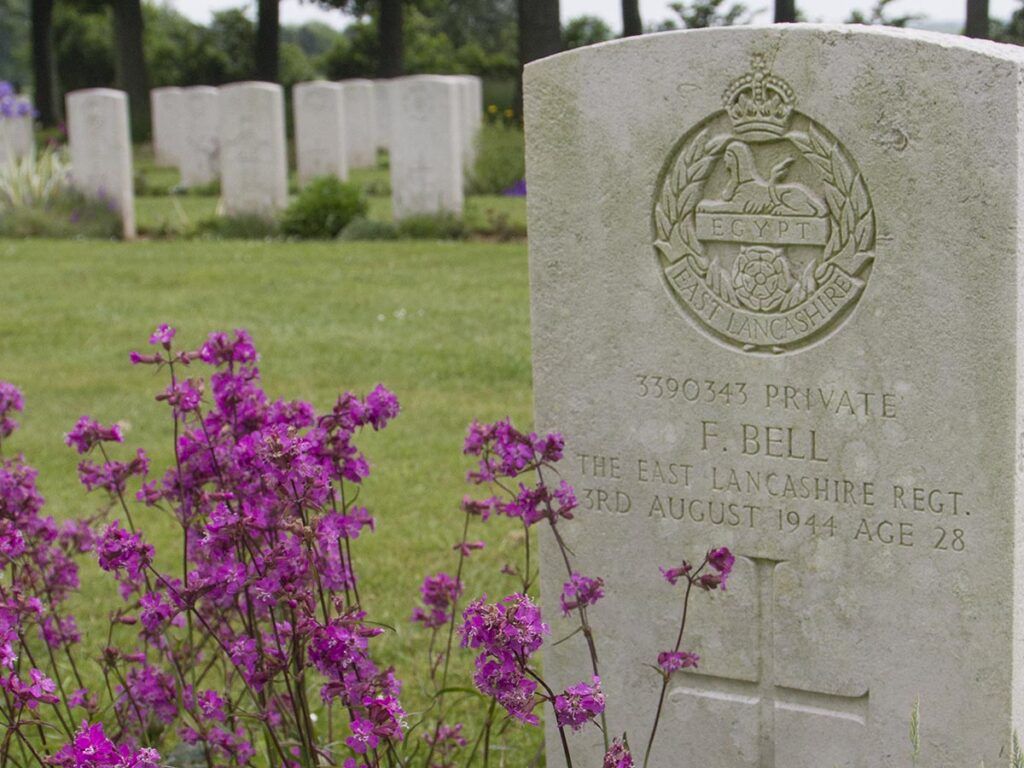
Other War Cemeteries
Hottot-les-Bagues War Cemetery lies just 4 kilometers southwest of Fontenay-le-Pesnel. This Commonwealth cemetery contains over 1,000 graves, primarily British soldiers who fell during the fierce battles around Caen in June and July 1944. The clean lines and immaculate maintenance create a peaceful atmosphere for reflection.
Ranville War Cemetery, about 25 kilometers northeast, holds special significance as the final resting place for many of the earliest D-Day casualties. The adjacent Ranville Churchyard contains graves of British paratroopers who landed in the opening hours of Operation Overlord.
Bayeux War Cemetery, the largest British WWII cemetery in France, is just 12 kilometers away. With nearly 4,500 Commonwealth burials, it provides context to the broader Allied campaign.
Historical Sites and Museums
Chateau du Bu in nearby Aurseulles offers a glimpse into the regional architecture and history that predates the war. This historic manor house stands as a reminder of Normandy’s rich heritage beyond the battles of 1944.
The Juno Beach Centre at Courseulles-sur-Mer (15 kilometers north) tells the story of Canadian forces during D-Day. Interactive exhibits help you understand the scope and significance of their contribution.
Bayeux’s Memorial Museum of the Battle of Normandy provides a comprehensive overview of the entire Normandy campaign. You’ll find detailed maps, artifacts, and vehicles that offer context to the cemeteries you’ve visited.
The Caen Memorial Museum, about 20 kilometers east, is one of France’s best WWII museums. Its exhibits extend beyond D-Day to explore the war’s wider causes and consequences.
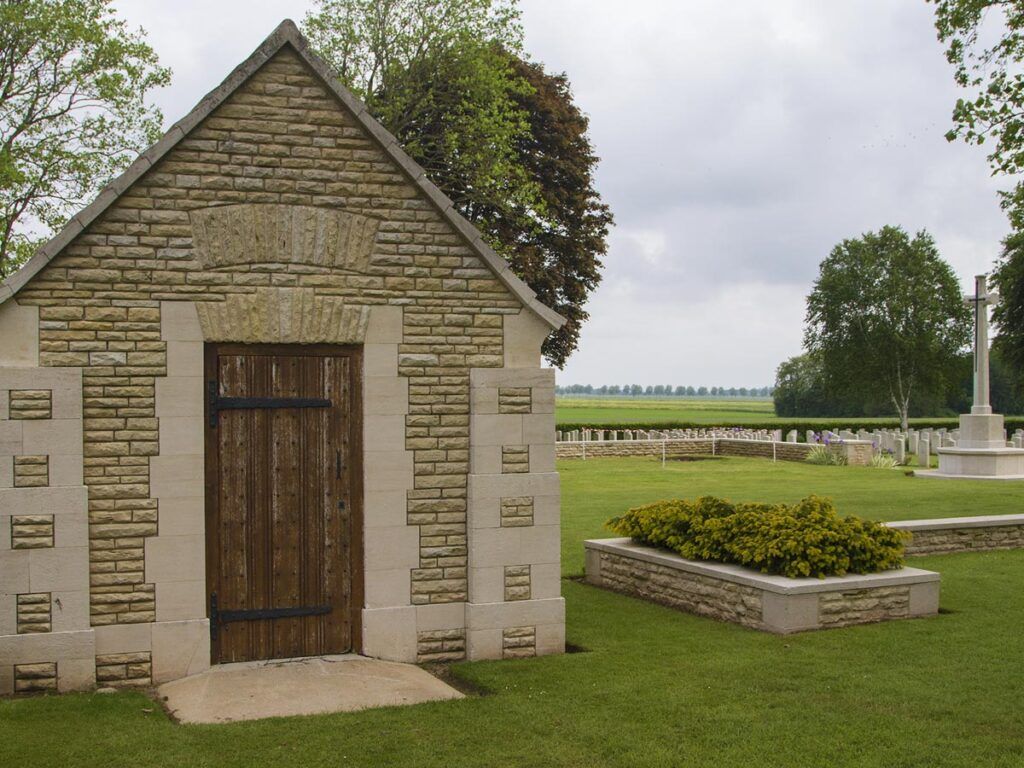
Noteworthy Regiments and Units
The Fontenay-le-Pesnel War Cemetery holds the remains of brave soldiers from several distinguished British regiments that fought valiantly during the Normandy campaign in 1944. As you walk among the graves, you’ll notice certain units have a particularly strong presence here.
Royal Canadian Air Force and Royal Air Force
While the cemetery predominantly contains army casualties, there is a small but significant presence of airmen. You’ll find the graves of at least one British airman among the 460 Commonwealth burials. These brave pilots supported ground operations during the intense fighting after D-Day, providing crucial air cover for advancing Allied troops.
The Royal Air Force and their Canadian counterparts played a vital role in the Battle of Normandy. Their reconnaissance missions helped map enemy positions, while bombing raids softened German defenses. These airmen risked everything flying dangerous missions over enemy territory, often facing deadly anti-aircraft fire and Luftwaffe fighters.
The Essex Regiment and Royal Artillery
As you explore the cemetery, you’ll notice several graves belonging to the Essex Regiment and Royal Artillery. The Royal Artillery provided essential fire support during the campaign, helping infantry units advance against determined German resistance.
The South Staffordshire, East Lancashire, and Royal Warwickshire Regiments have particularly large numbers of graves here, along with the Durham Light Infantry. These units suffered heavy casualties during the fierce fighting south of Bayeux. They faced determined German defenders entrenched in the bocage countryside, where hedgerows provided natural defensive positions.
The 51st Highland Division also contributed to the Normandy campaign, though their presence in this cemetery is less prominent than other units mentioned.
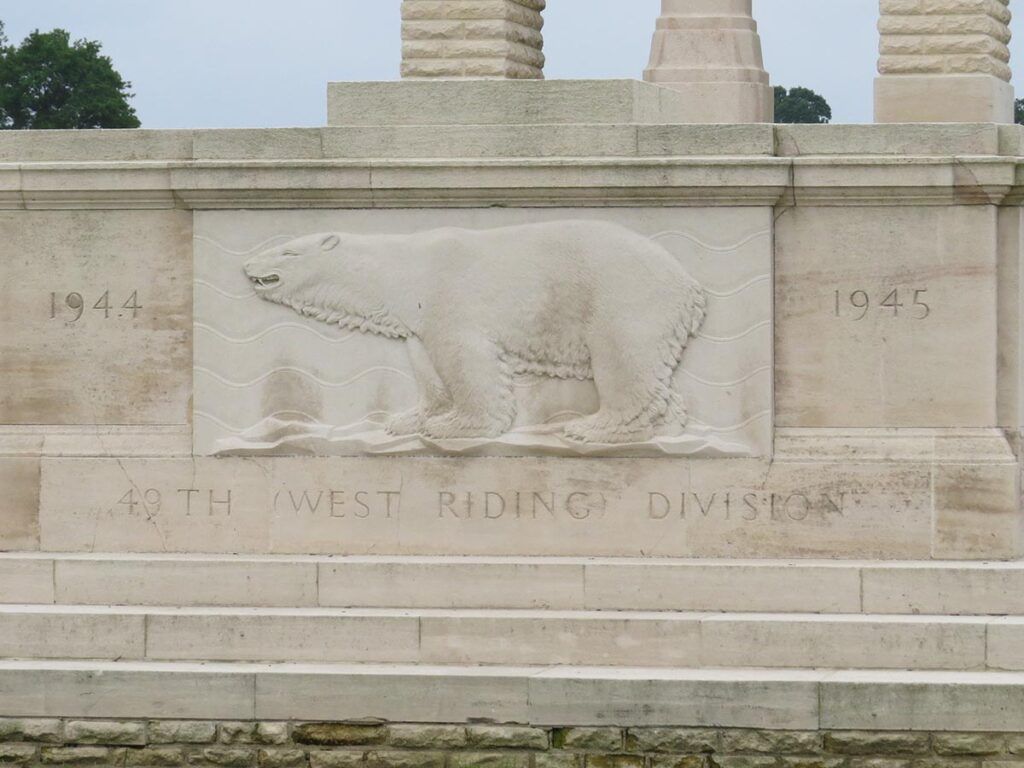
Why It’s Worth Visiting
Fontenay-le-Pesnel War Cemetery offers you a powerful and moving experience unlike the more crowded D-Day sites. This peaceful memorial holds over 500 Commonwealth soldiers and 59 German casualties from World War II.
When you visit, you’ll find a beautifully maintained sanctuary where history feels tangible and personal. Each headstone tells a story of sacrifice during the difficult fighting that followed the Normandy landings.
The cemetery’s location west of Caen puts you in the heart of historically significant battle areas that were crucial to the Allied advance. You can connect with history in a more intimate setting than at larger memorial sites.
What makes this cemetery special is its tranquil atmosphere. You’ll often find yourself alone with your thoughts, able to reflect on the human cost of war without crowds or distractions.
Many visitors leave deeply moved by:
- The meticulous care given to each grave
- The peaceful countryside setting
- The opportunity for quiet reflection
- The lesser-known stories of the campaign
The cemetery is particularly worth visiting if you’re interested in the days and weeks following D-Day, when Allied forces fought to expand their foothold in Normandy.
You can easily combine your visit with other nearby historical sites, making it a meaningful addition to your Normandy journey.

